In this in depth guide to garlic, we are covering all types of garlic, big and small, and how to use them.
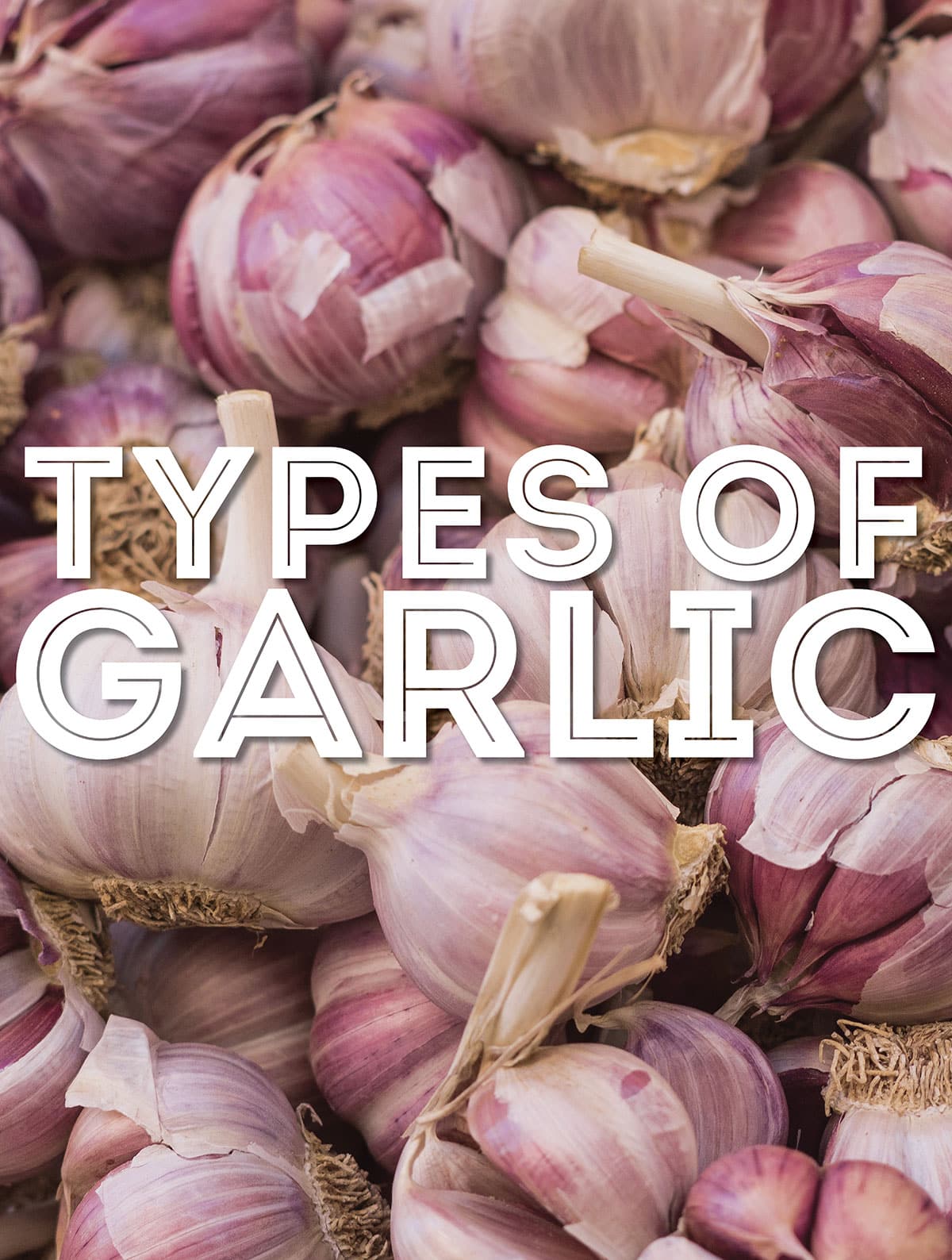
Garlic is a popular ingredient used in a variety of cuisines around the world. Not only does it add flavor to dishes, but it also has many health benefits.
There are two main types of garlic (hardneck and softneck) with dozens – if not hundreds – of varieties of each, and each of these has its own unique flavor and characteristics.
In this article, we’ll explore 38 popular varieties of garlic and what makes each special!
- Hardneck vs Softneck Garlic
- Varieties of Softneck Garlic
- Varieties of Hardneck Garlic
- Armenian Garlic
- Asian Tempest Garlic
- Belarus Garlic
- Bulgarian Garlic
- Carpathian Garlic
- Chesnok Red Garlic
- Czech Broadleaf Garlic
- Georgian Crystal Garlic
- German Extra Hardy Garlic
- Kettle River Giant Garlic
- Korean Red Garlic
- Leningrad Garlic
- Metechi Garlic
- Montana Giant Garlic
- Music Garlic
- Persian Star Garlic
- Purple Glazer Garlic
- Rosewood Garlic
- Shandong Purple Garlic
- Siberian Garlic
- Spanish Roja Garlic
- Tasmanian Purple Garlic
- Transylvanian Garlic
- Turban Garlic
- Vietnamese Red Garlic
- Garlic Powder vs Minced Garlic
- Garlic Powder vs Garlic Salt
GARLIC TRIVIA! How did garlic come to be considered a Vampire repellent? Scroll to the bottom to see the answer.
Hardneck vs Softneck Garlic
Hardneck and softneck garlic are two main categories of garlic varieties, each with distinct characteristics. Here are the key differences between them:
Softneck Garlic
This is the type of garlic you’ll find in most grocery stores. One of the chief benefits of softneck garlic is that it stores very well.
Stem and Bulb Formation: Softneck garlic varieties lack the central stalk or “scape” found in hardneck garlic. Instead, they have soft, flexible stems that are braided easily. Softneck garlic usually forms multiple layers of smaller cloves around the central core. The cloves are usually smaller and can be harder to peel than hardneck varieties.
Flavor and Culinary Characteristics: Softneck garlic generally has a milder, sweeter flavor than hardneck garlic. It tends to be more versatile in culinary applications and is commonly used in dishes that require a subtle garlic taste.
Storage and Shelf Life: Softneck garlic has an extended shelf life, often lasting 6-12 months when stored properly. It stores better than hardneck because it has more dense heads and tightly wrapped cloves, and is thus harder to peel. These tighter, multiple layers of cloves provide better protection against moisture loss. Its long shelflife is part of the reason it is more heavily cultivated, and thus available in the grocery, than hardneck garlic. It also grows in a wider range of climates adding to its advantage in total cultivation. We discuss how to store garlic at the bottom of this post and in our Everything Garlic Guide.
Hardneck Garlic
Stem and Bulb Formation: Hardneck garlic varieties produce a hard, central stalk or scape that emerges from the center of the bulb. The scape often curls and produces a flower bud at the top. Hardneck garlic typically forms fewer, larger cloves around the central stalk. It is also much easier to peel than softneck garlic.
Flavor and Culinary Characteristics: Hardneck garlic tends to have a stronger, more robust flavor compared to softneck garlic. It often exhibits complex flavor profiles with subtle nuances. Hardneck garlic is commonly favored by chefs and garlic enthusiasts for its rich, bold taste.
Storage and Shelf Life: Hardneck garlic has a shorter shelf life compared to softneck garlic. It typically stores well for around 3-6 months under proper conditions.
Varieties of Softneck Garlic
Artichoke Garlic
Artichoke garlic is one of the most common and widely available softneck varieties. It produces large bulbs with multiple layers of cloves. Artichoke garlic has a milder flavor compared to other varieties, making it suitable for a wide range of dishes. It is commonly used in sautés, stir-fries, pasta sauces, and roasted vegetables.
Black Garlic
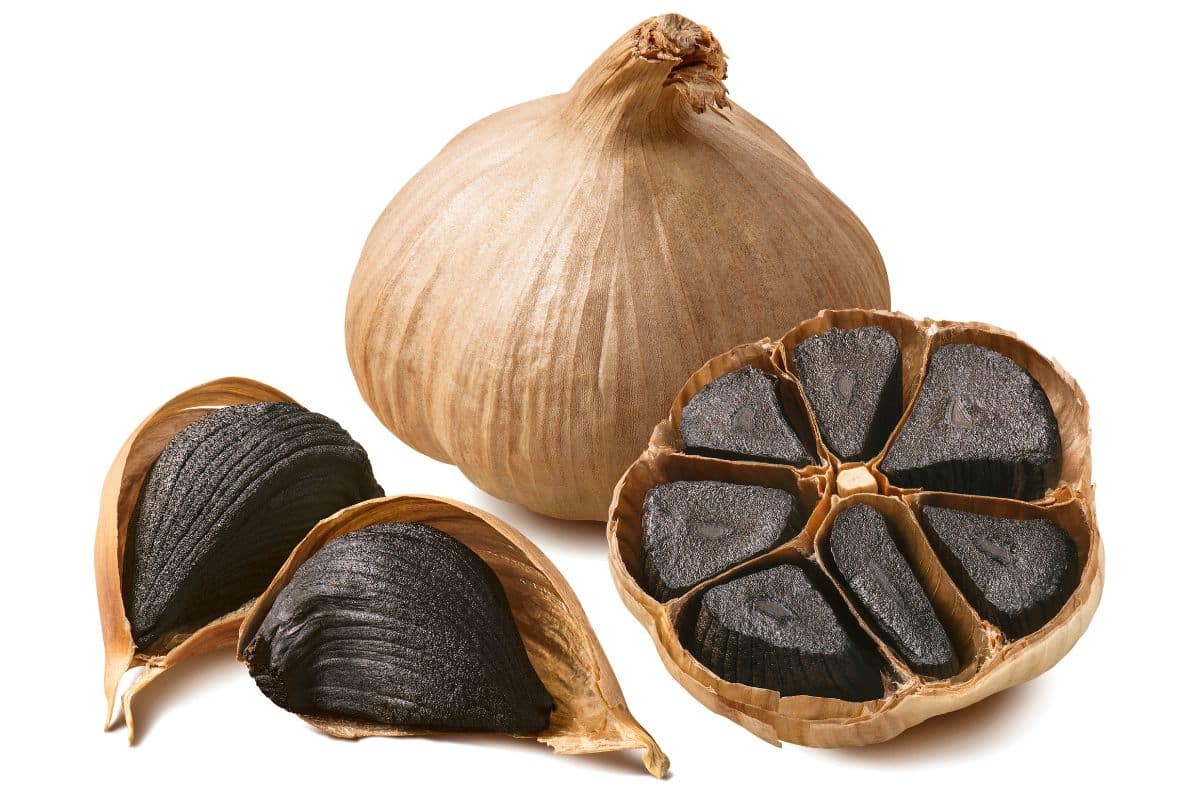
Black garlic is not a specific variety but rather garlic that has undergone a fermentation process. It is made by aging regular garlic bulbs at controlled temperature and humidity for several weeks. The process transforms the cloves into black, soft, and sweet garlic with a molasses-like flavor. It can be used as a unique ingredient in a variety of dishes, such as sauces, dressings, and even desserts. We will include some of our favorite garlic recipes in this post, but don’t have any for dessert. It would, however, be great on bagels in cream cheese. Check out our Guide to Making Flavored Cream Cheese.
Blanco Piacenza
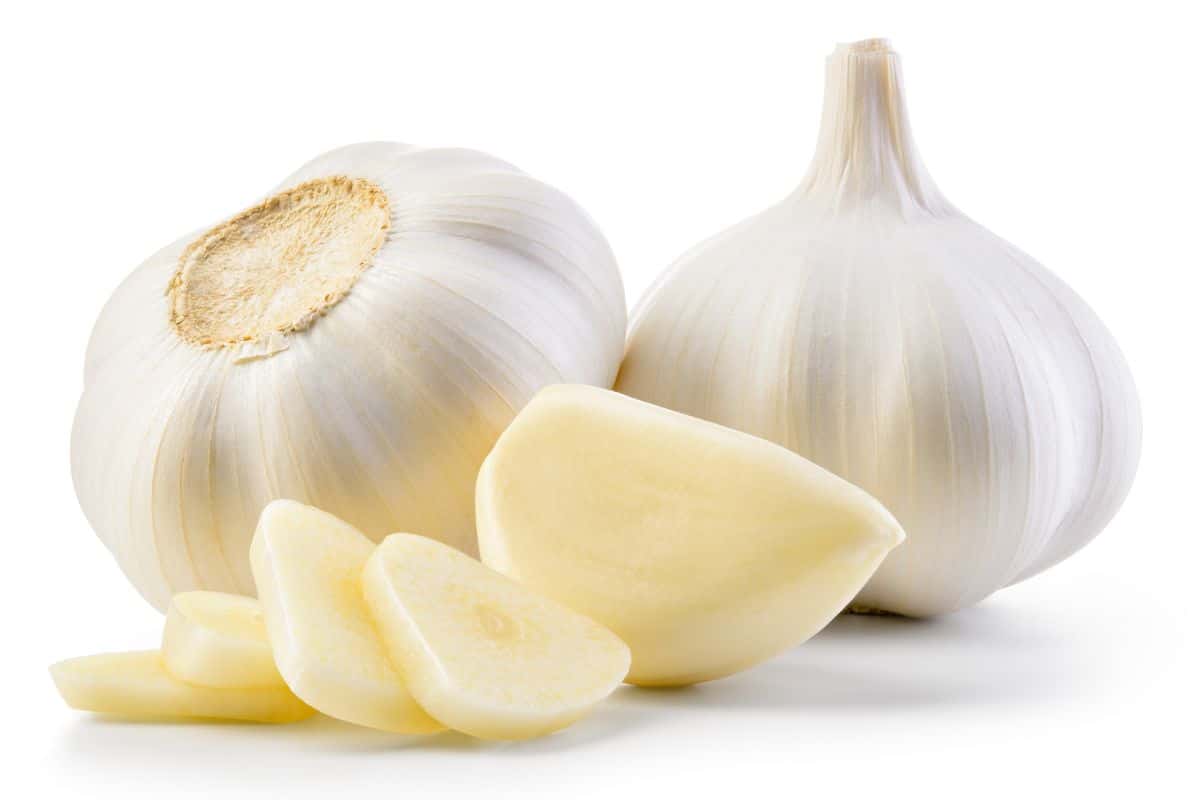
Blanco Piacenza garlic is an Italian softneck variety known for its large bulbs and mild flavor. It has a white skin and cloves that are easy to peel. This garlic variety is versatile and can be used in various culinary applications. It works well in pastas, sautés, soups, and dressings, providing a subtle garlic taste without overpowering other flavors.
California Early Garlic
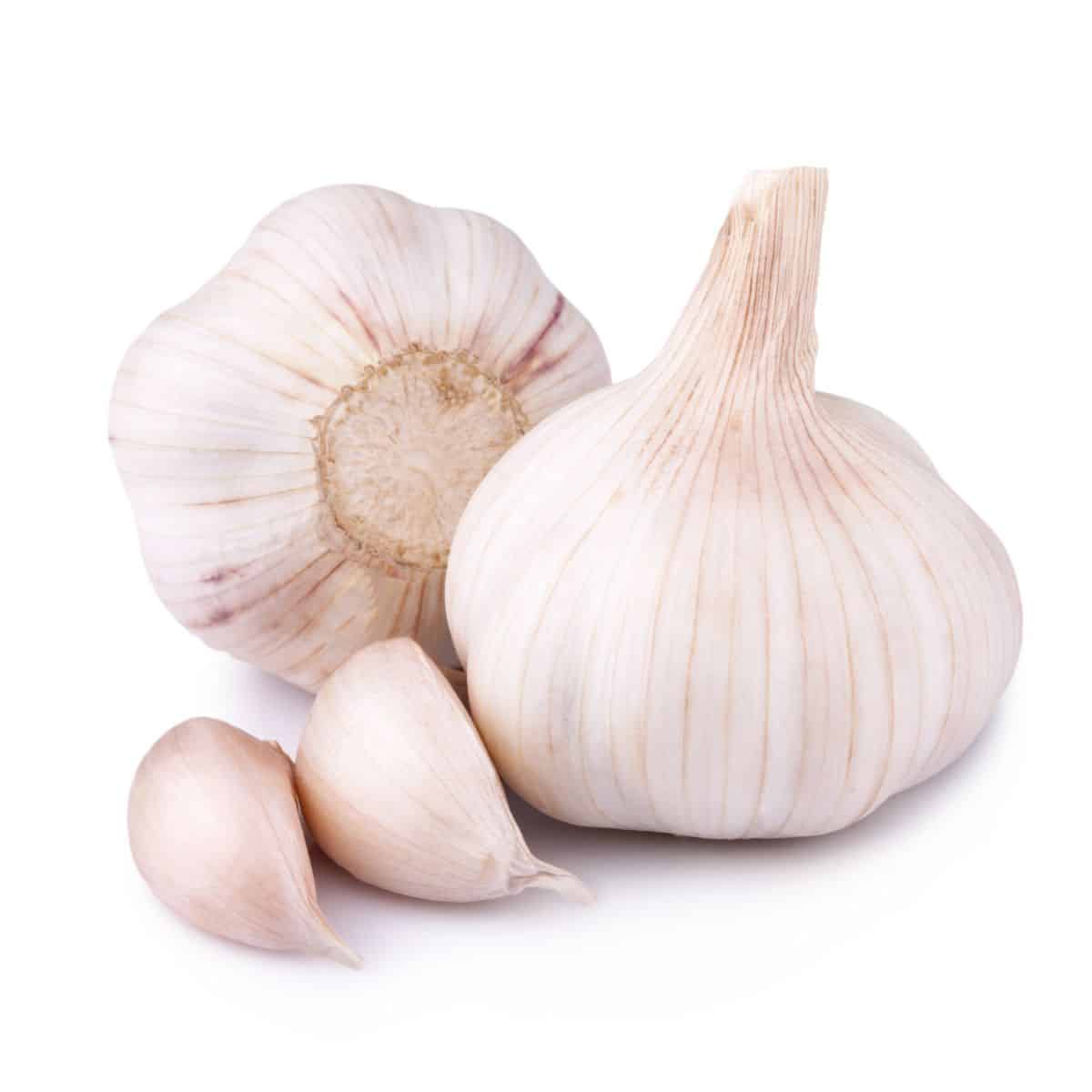
California Early garlic is an early-maturing softneck variety that is harvested in late spring or early summer. It has a mild, slightly sweet flavor and a white or off-white skin. California Early garlic is excellent for fresh use and can be minced or crushed and added to salads, dressings, and dips.
California Late Garlic
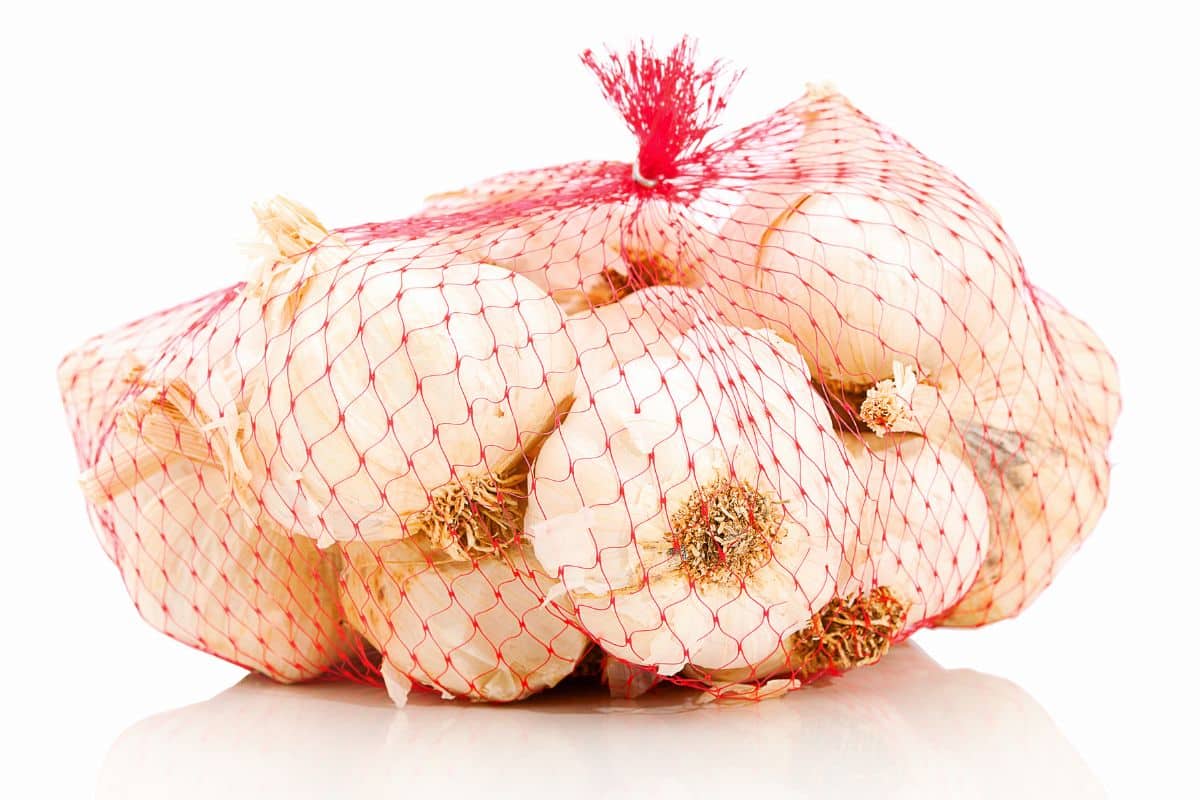
California Late garlic, also known as California Late White, is a softneck variety that matures later in the season. It has a white outer skin and large cloves. This garlic variety has a pungent and robust flavor that intensifies when cooked. It is well-suited for dishes that require a strong garlic flavor, such as roasted meats, stews, and sauces. California Late garlic also stores well and can be used throughout the year.
Creole Garlic
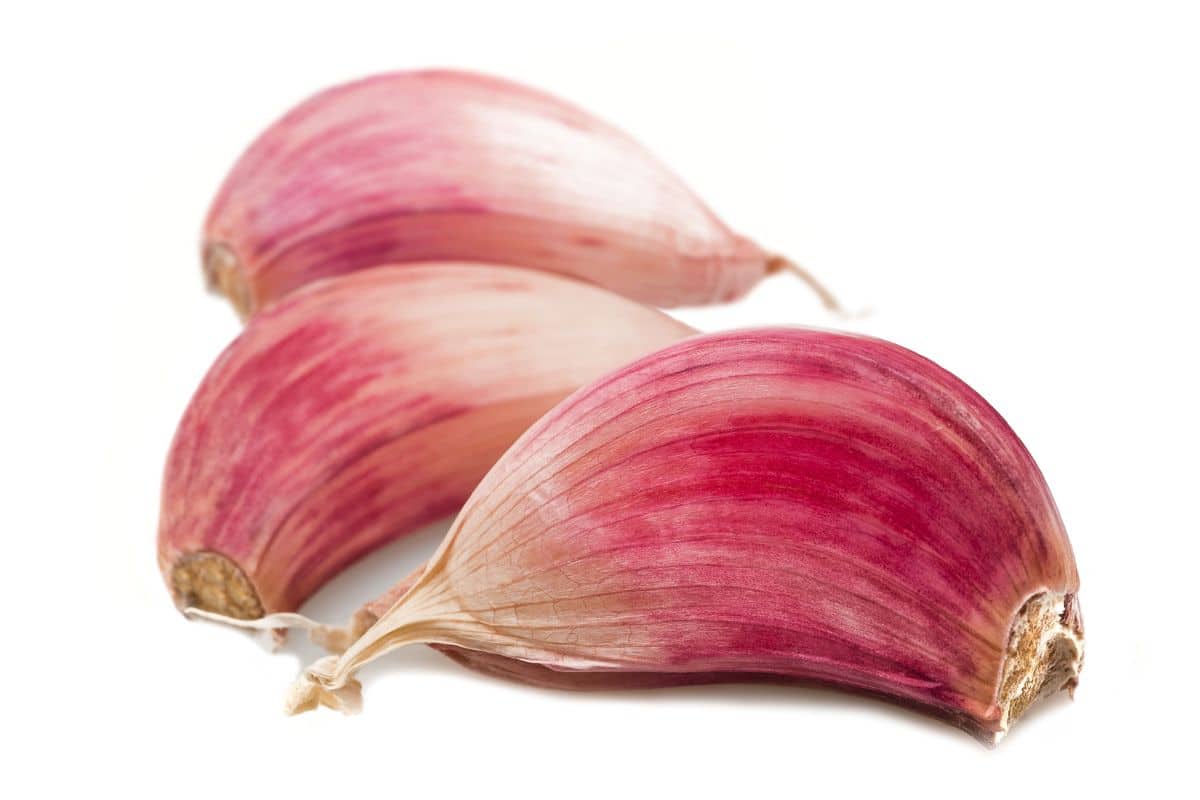
Creole garlic is a popular softneck variety known for its bold, spicy flavor. It has a reddish-brown skin and typically has fewer but larger cloves compared to other varieties. Creole garlic is often used in Cajun and Creole cuisines, as well as in salsas, stews, and marinades.
Corsican Red Garlic
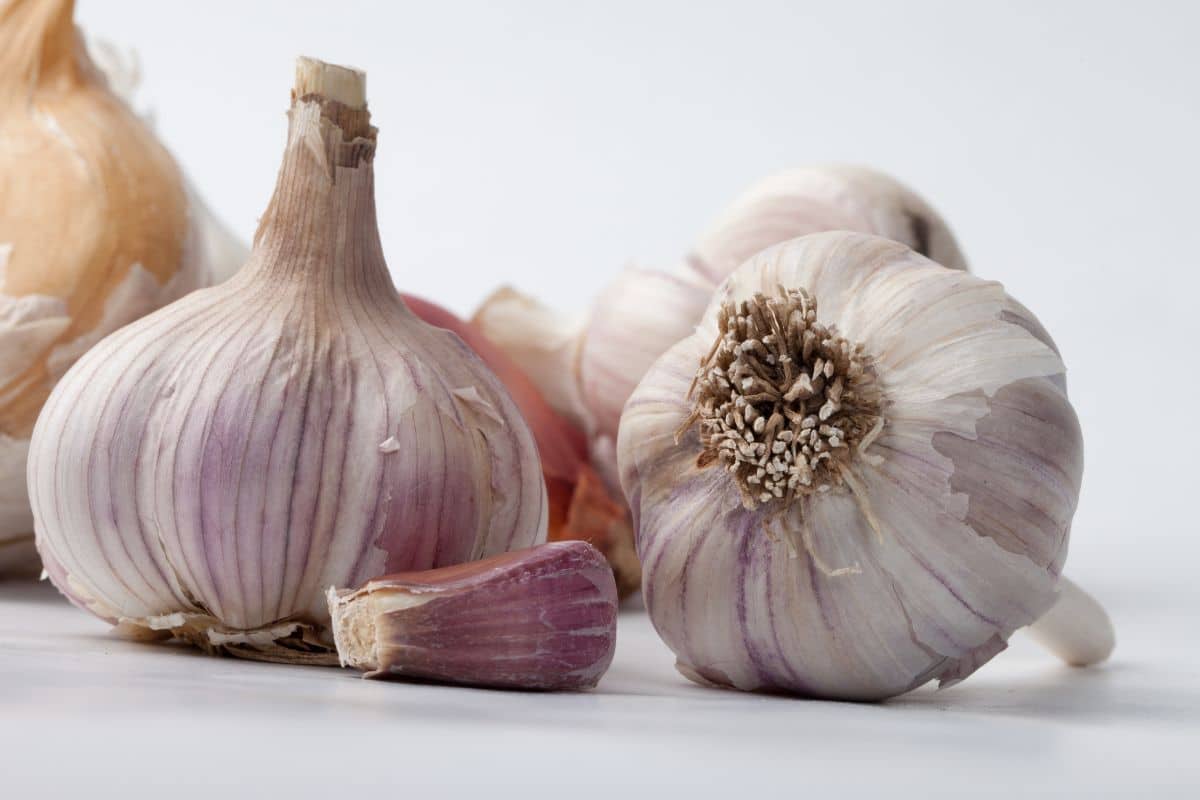
Corsican Red garlic is a softneck variety with a rich, complex flavor. It has a reddish-brown skin and medium-sized cloves. This garlic variety is often described as having a sweet and nutty taste with hints of spice. Corsican Red garlic is well-suited for roasting, grilling, and using in Mediterranean-inspired dishes like roasted vegetables, braised meats, and tomato-based sauces. It would pair well with these Mediterranean Romesco Bowls
Elephant Garlic
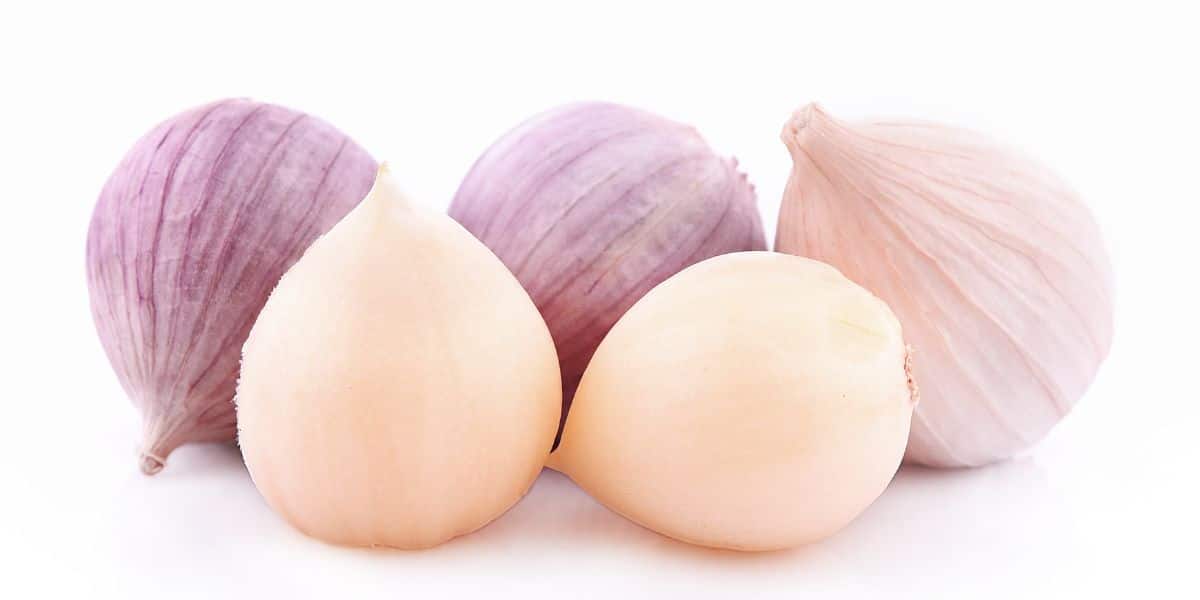
Elephant garlic is not a true garlic but a related species called Allium Ampeloprasum. It has a milder and sweeter flavor compared to regular garlic. Elephant garlic bulbs are much larger in size, resembling small onions. It can be used in similar ways as regular garlic, but the milder flavor makes it popular with many cooks. We think it is a good option for this Sticky Garlic Cauliflower recipe.
French Red Garlic
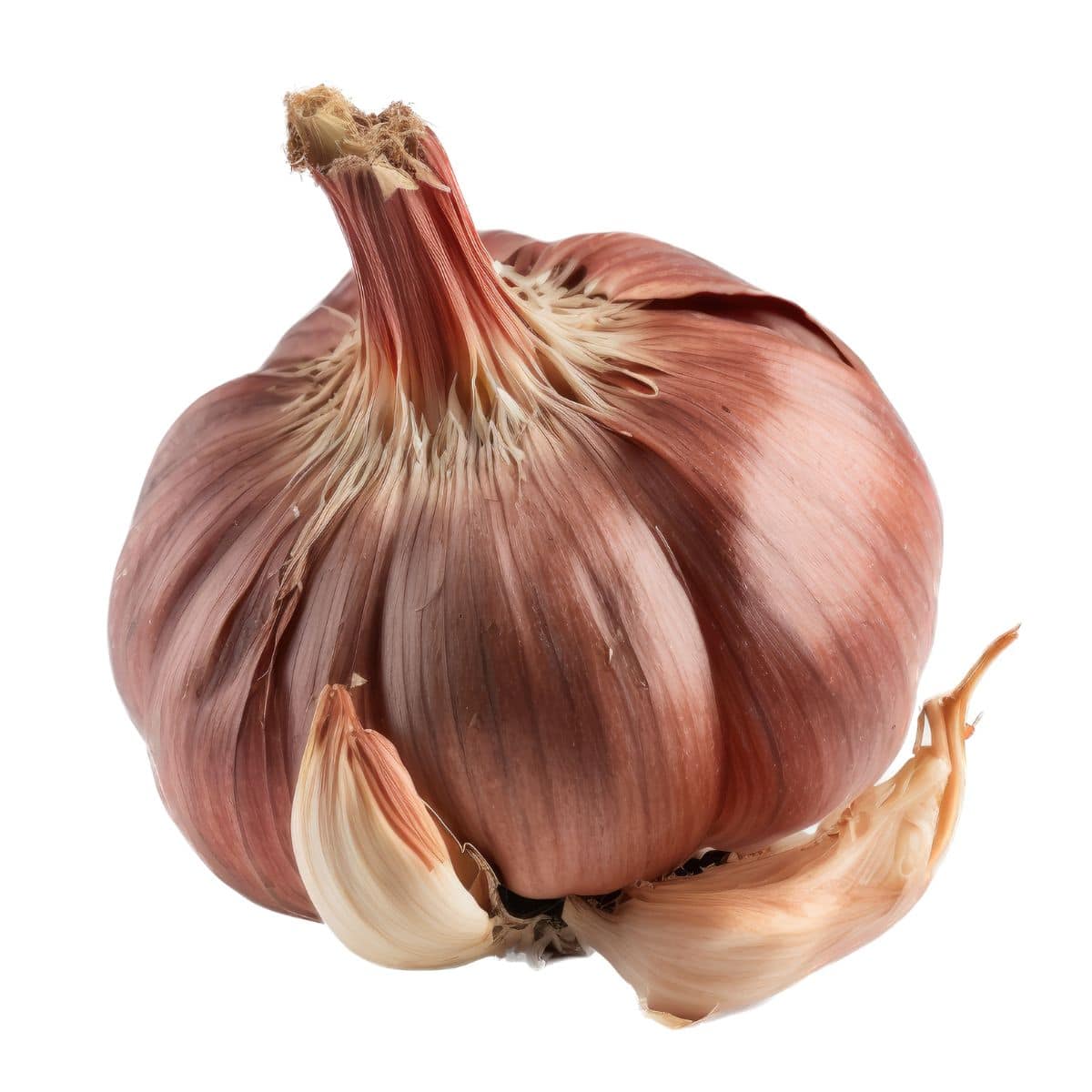
French Red garlic is a softneck variety that originated in France. It has a reddish-brown skin and medium-sized cloves. This garlic variety is known for its rich, complex, and slightly spicy flavor. French Red garlic is commonly used in French cuisine, including stews, soups, roasted meats, and sauces. It can also be enjoyed raw in salad dressings or as a topping for bruschetta.
Inchelium Red Garlic
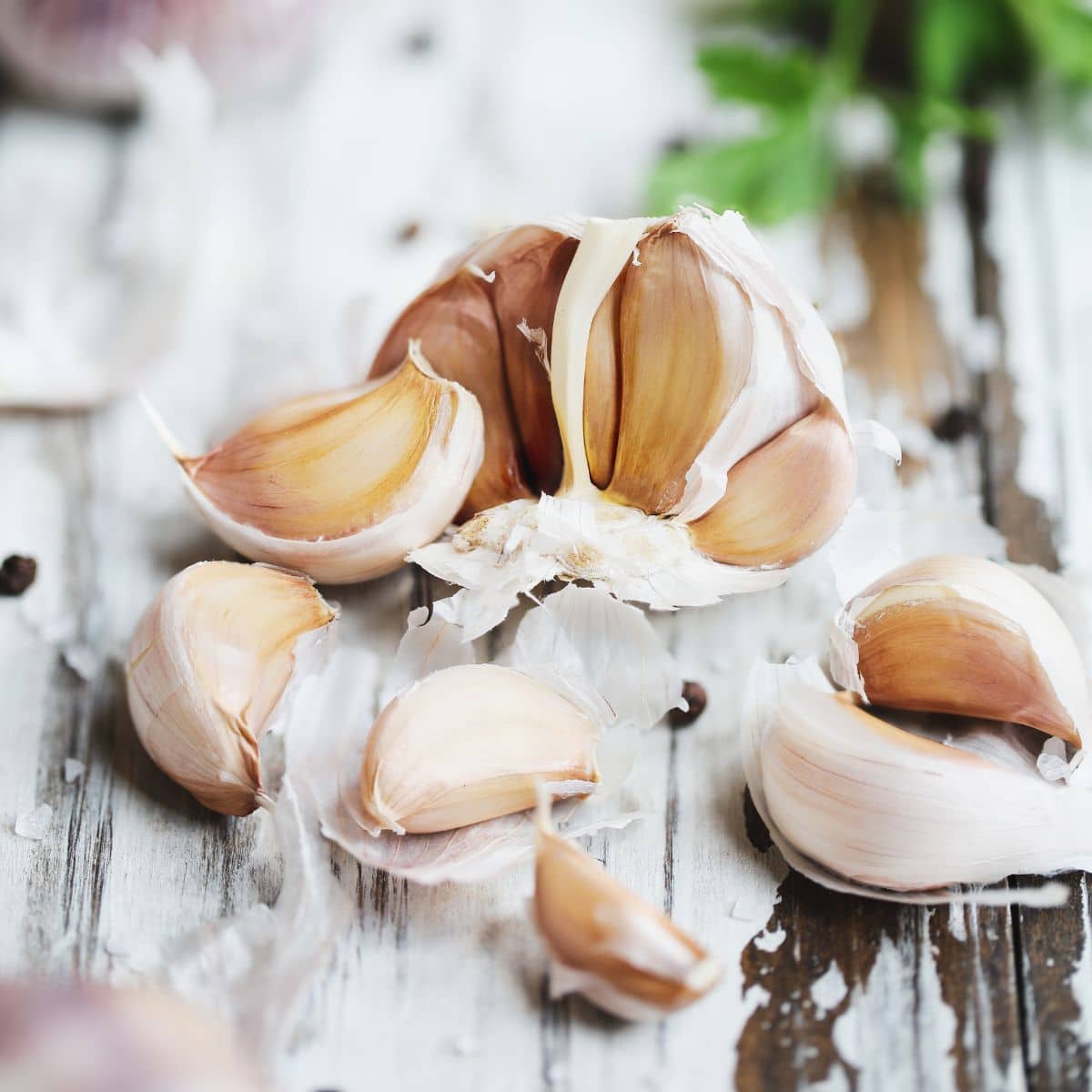
Inchelium Red garlic is a softneck heirloom variety with a mild, rich flavor. It has a purple-streaked white skin and large cloves. Inchelium Red garlic is versatile and can be used in various dishes, including roasted meats, soups, and sauces. It also has a long storage life for a softneck variety.
Silver Rose Garlic
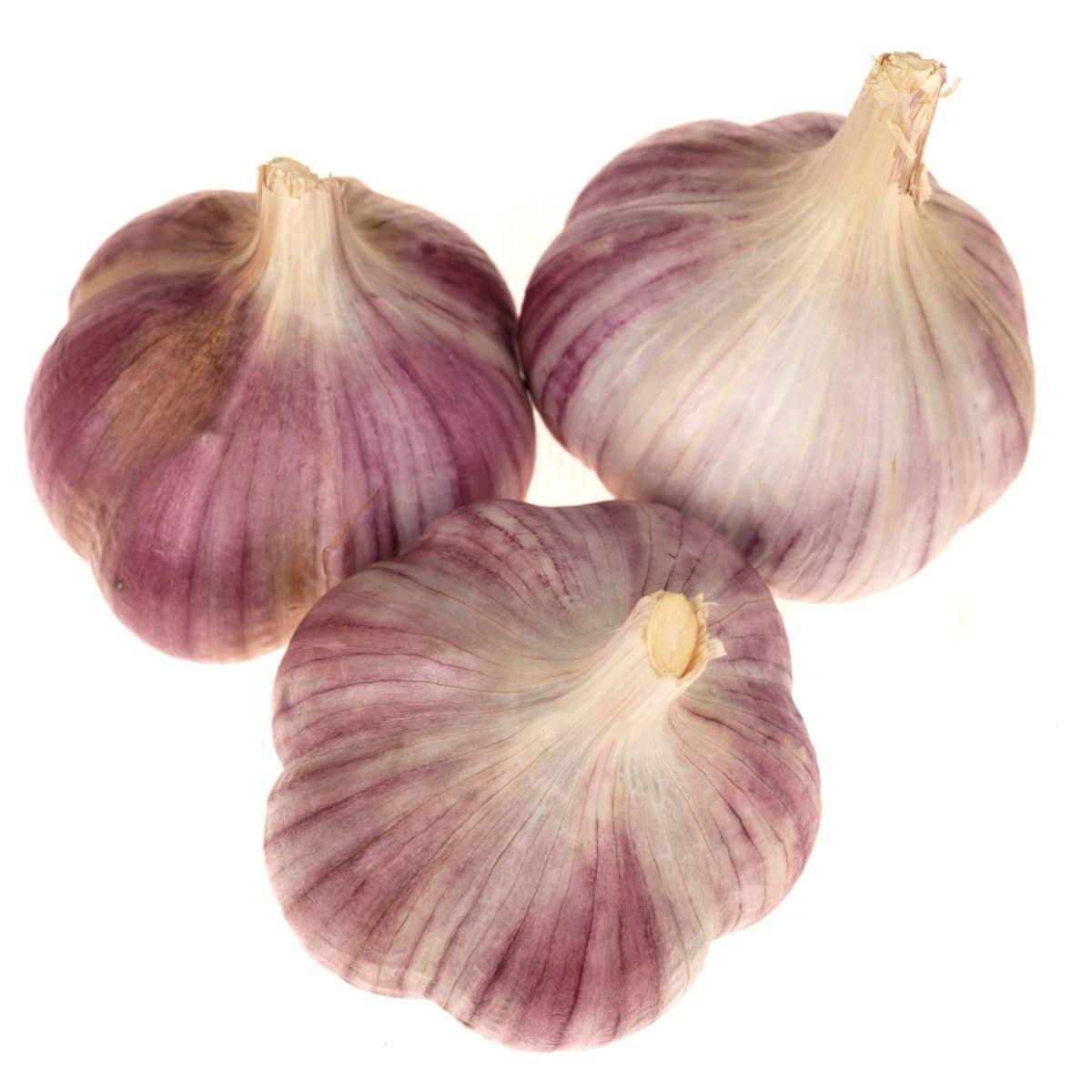
Silver Rose garlic features beautiful pinkish-purple skins and medium-sized cloves. It has a robust and full-bodied flavor with a hint of spiciness. Silver Rose garlic can be used in a wide range of dishes including stir-fries, soups, marinades, and dressings. It also works well when minced and added to sauces or used as a flavor enhancer in various recipes.
Silverskin Garlic
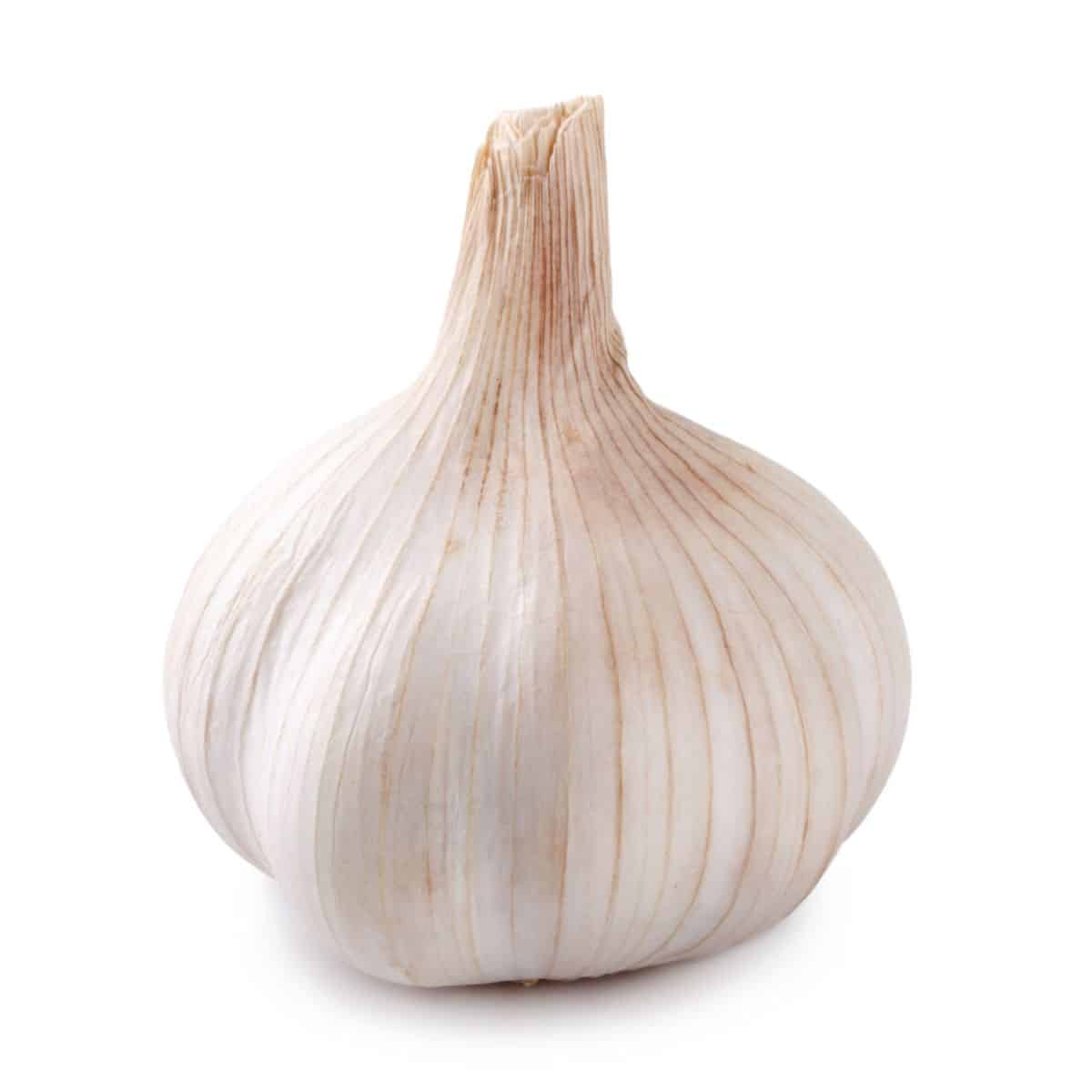
Silverskin garlic is a versatile softneck variety with a strong flavor. It has a papery white skin and small cloves. Silverskin garlic is often used for pickling, roasting, and in recipes where a robust garlic flavor is desired.
Silver White Garlic
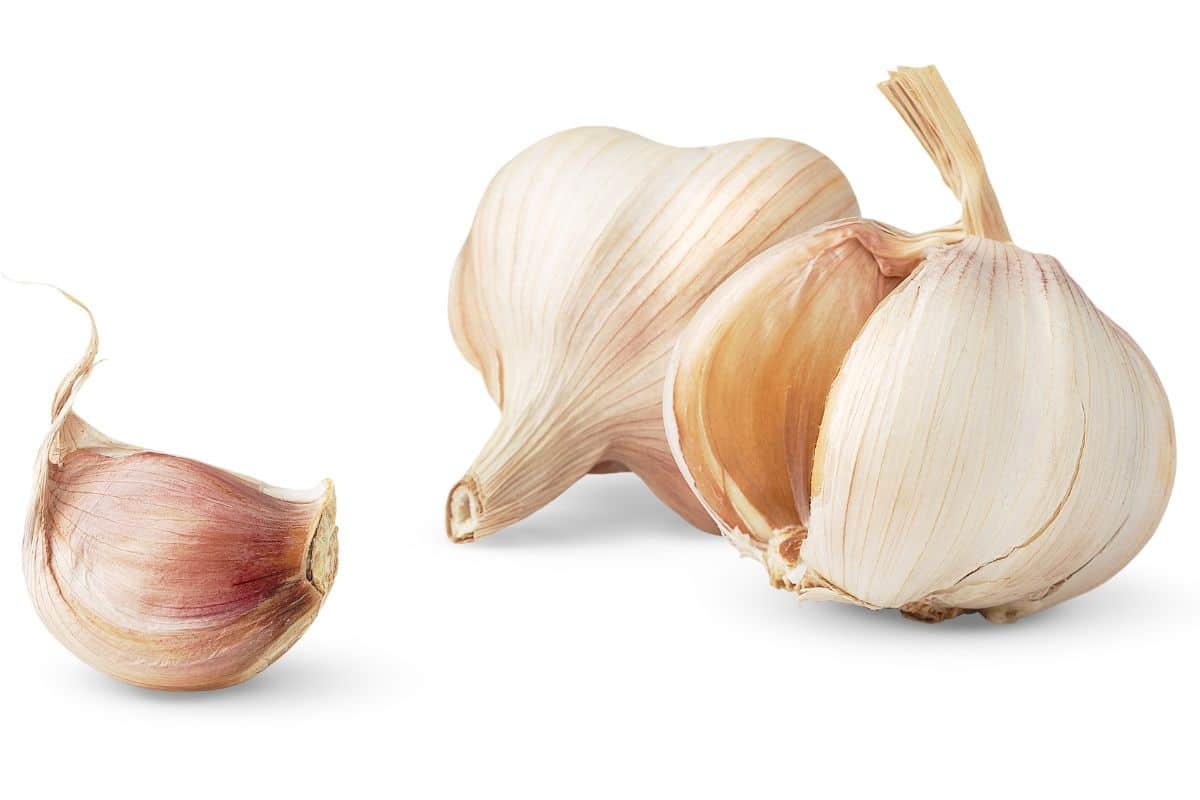
Silver White garlic, also known as California Silver garlic or Silver Skin garlic, is a widely grown softneck variety. It has a white skin and small to medium-sized cloves. Silver White garlic has a milder and slightly sweet flavor compared to other varieties, making it versatile and suitable for a variety of dishes. It can be used in salads, sautés, stir-fries, and other recipes where a subtle garlic taste is desired. This variety is also often used for pickling.
Varieties of Hardneck Garlic
Armenian Garlic
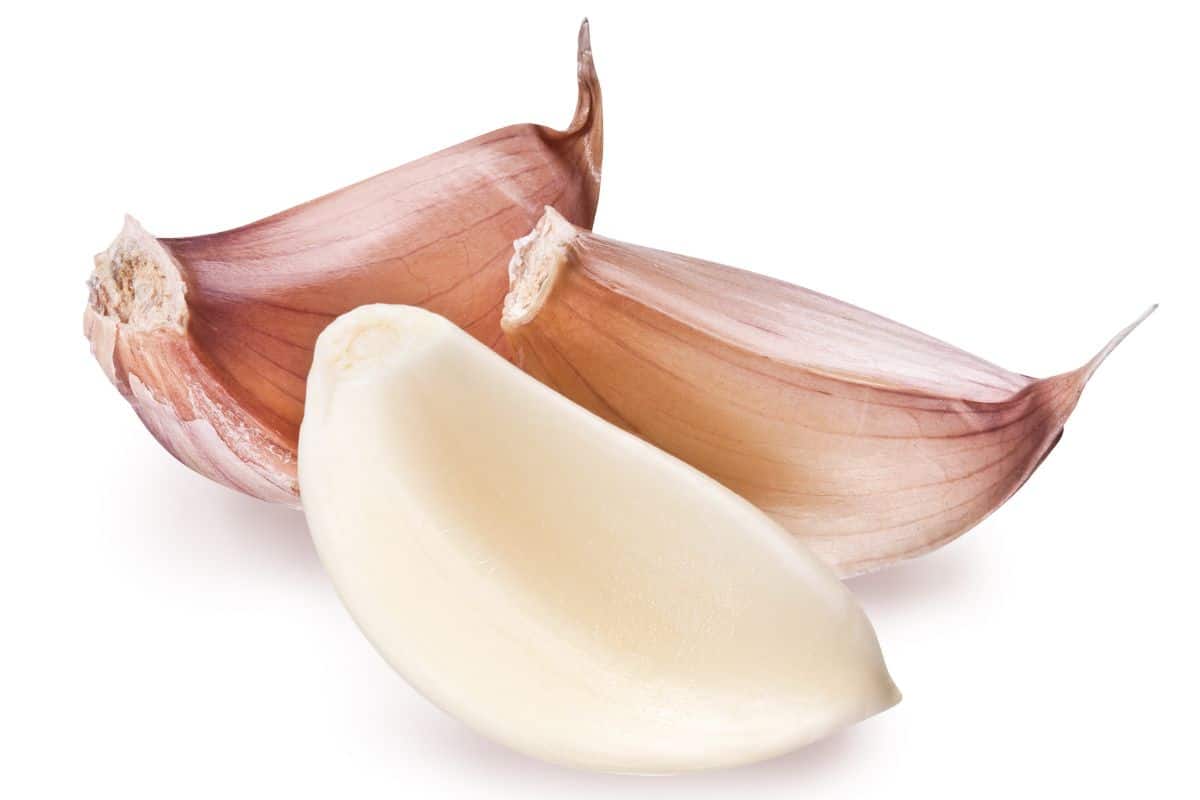
Armenian garlic is known for its large bulb size and mild, slightly sweet flavor. It has a light purple stripe on its papery skin. It’s great for roasting or using in recipes where you want a milder garlic flavor like these Garlic Butter Miso Mushrooms
Asian Tempest Garlic
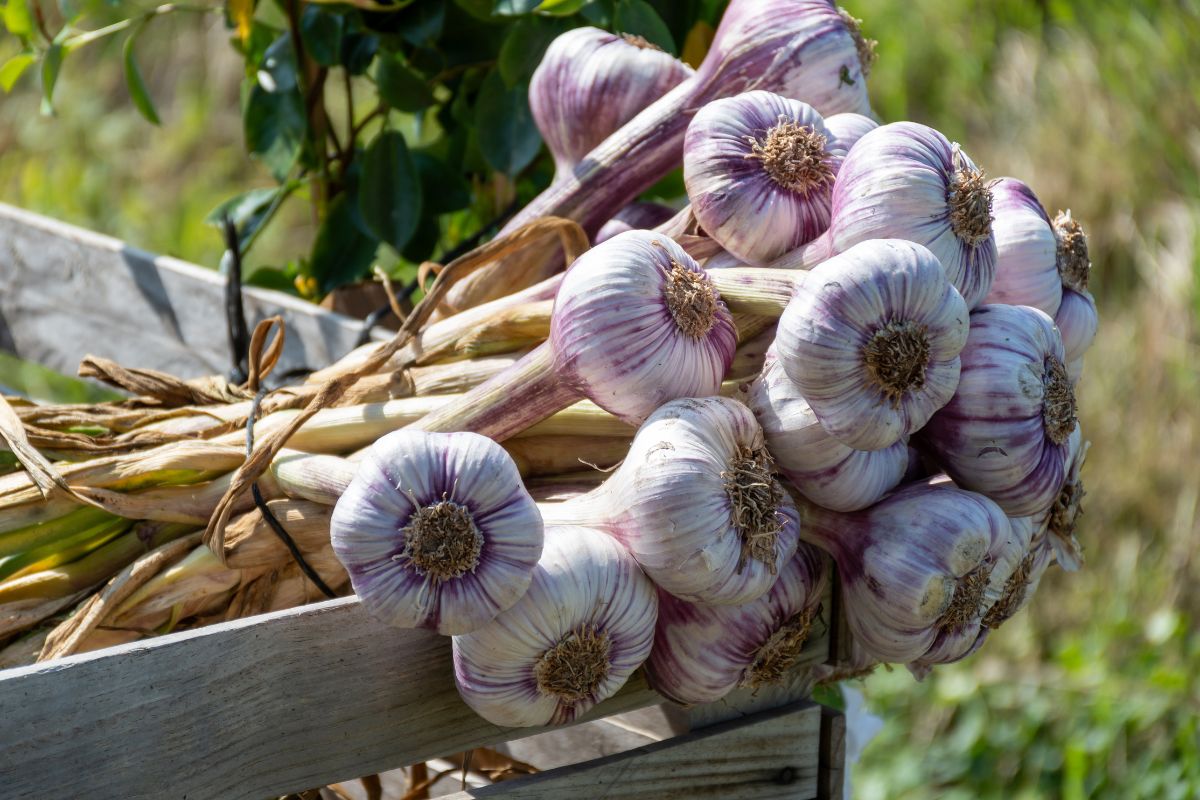
Asian Tempest garlic is known for being spicy with a hot flavor. It has medium-sized cloves with a reddish-brown outer skin. It’s commonly used in Asian cuisine, especially stir-fries, soups, and marinades that require a bold garlic taste. Perhaps use it in this Sticky Orange Cauliflower Recipe.
Belarus Garlic
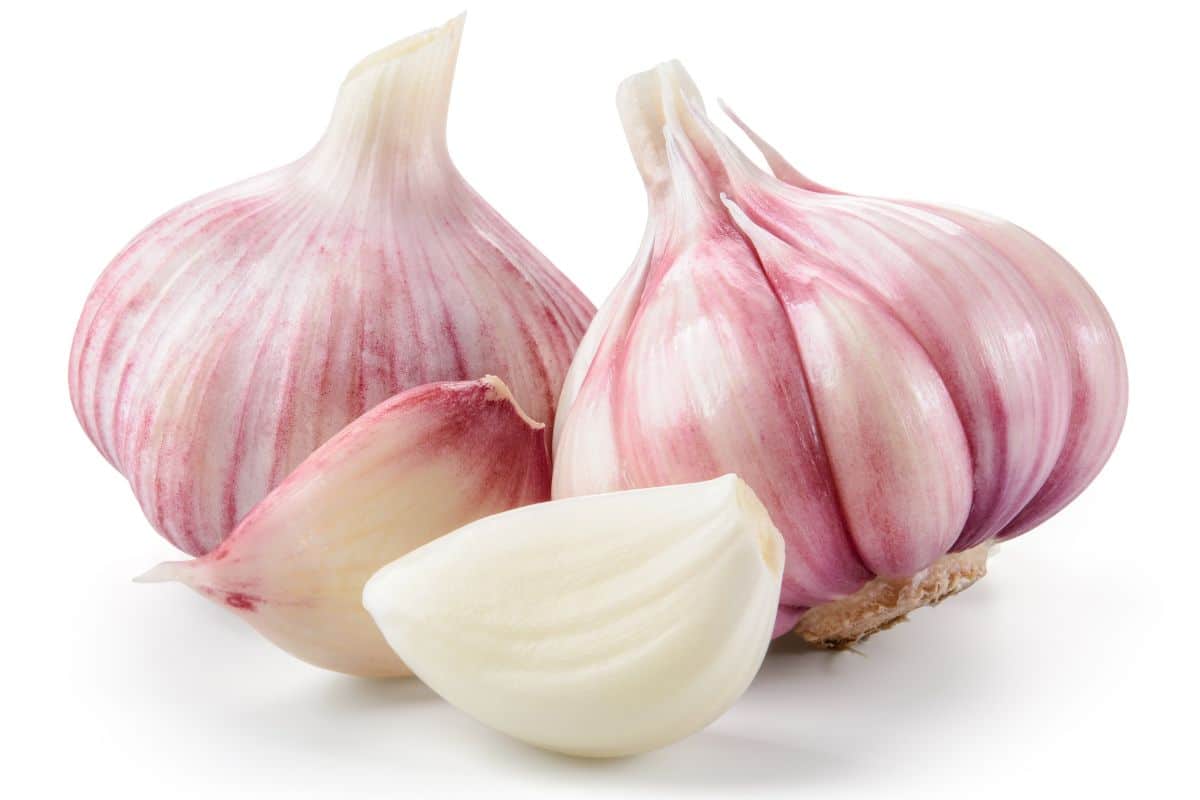
Belarus garlic originated in, wait for it…… Belarus, a nation bordering Russia and Ukraine. It has a strong, robust flavor and is often described as having a good balance of heat and sweetness. It has a purple-streaked outer skin and is suitable for both raw and cooked applications.
Bulgarian Garlic
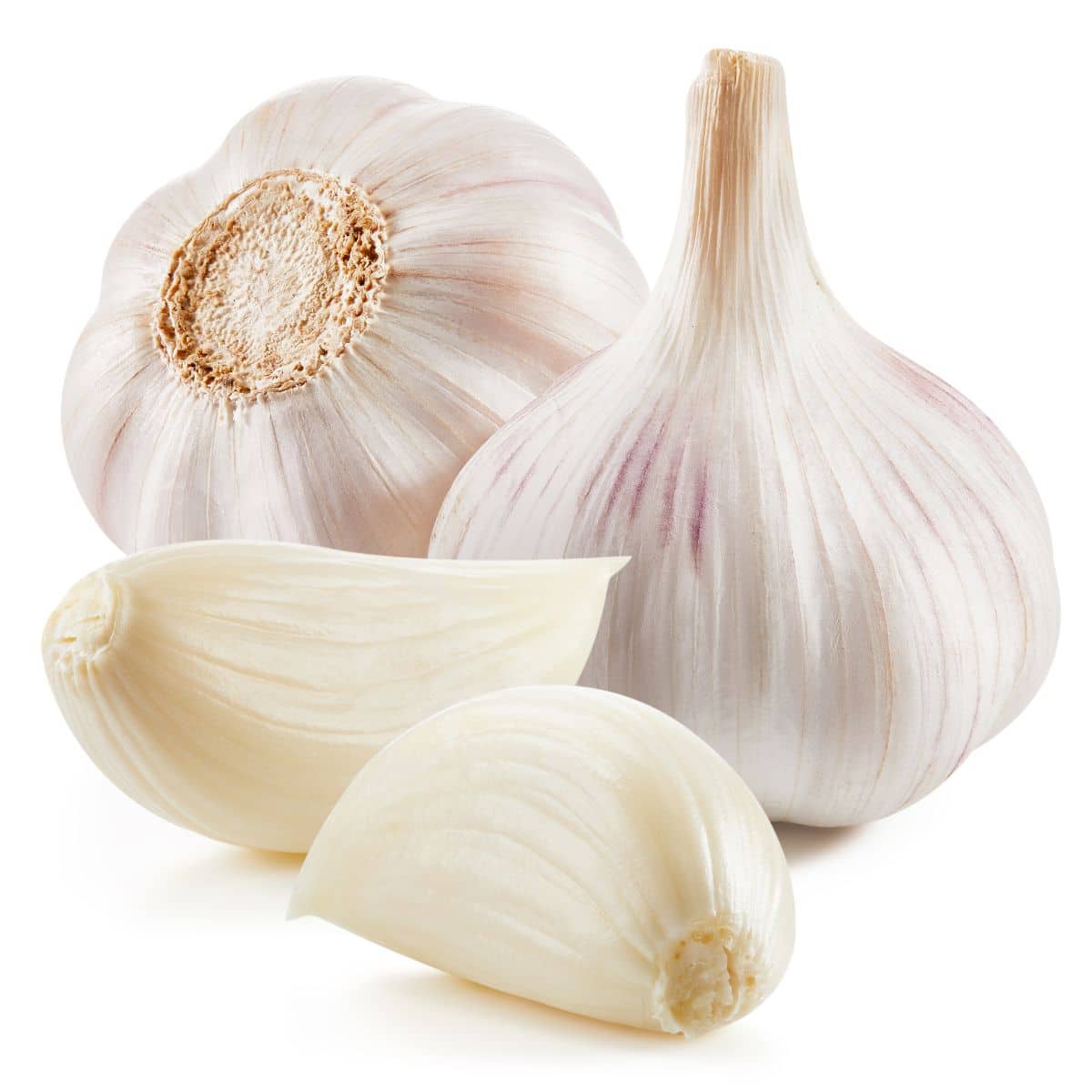
Bulgarian garlic is a hardneck variety known for its robust flavor and high levels of allicin, which gives it a strong and pungent taste, and is known for its healthy properties (see the nutrition section at the bottom of the article). It has large cloves with a white outer skin. It works well in recipes where you want a bold garlic flavor, such as stews, sauces, and marinades.
Carpathian Garlic
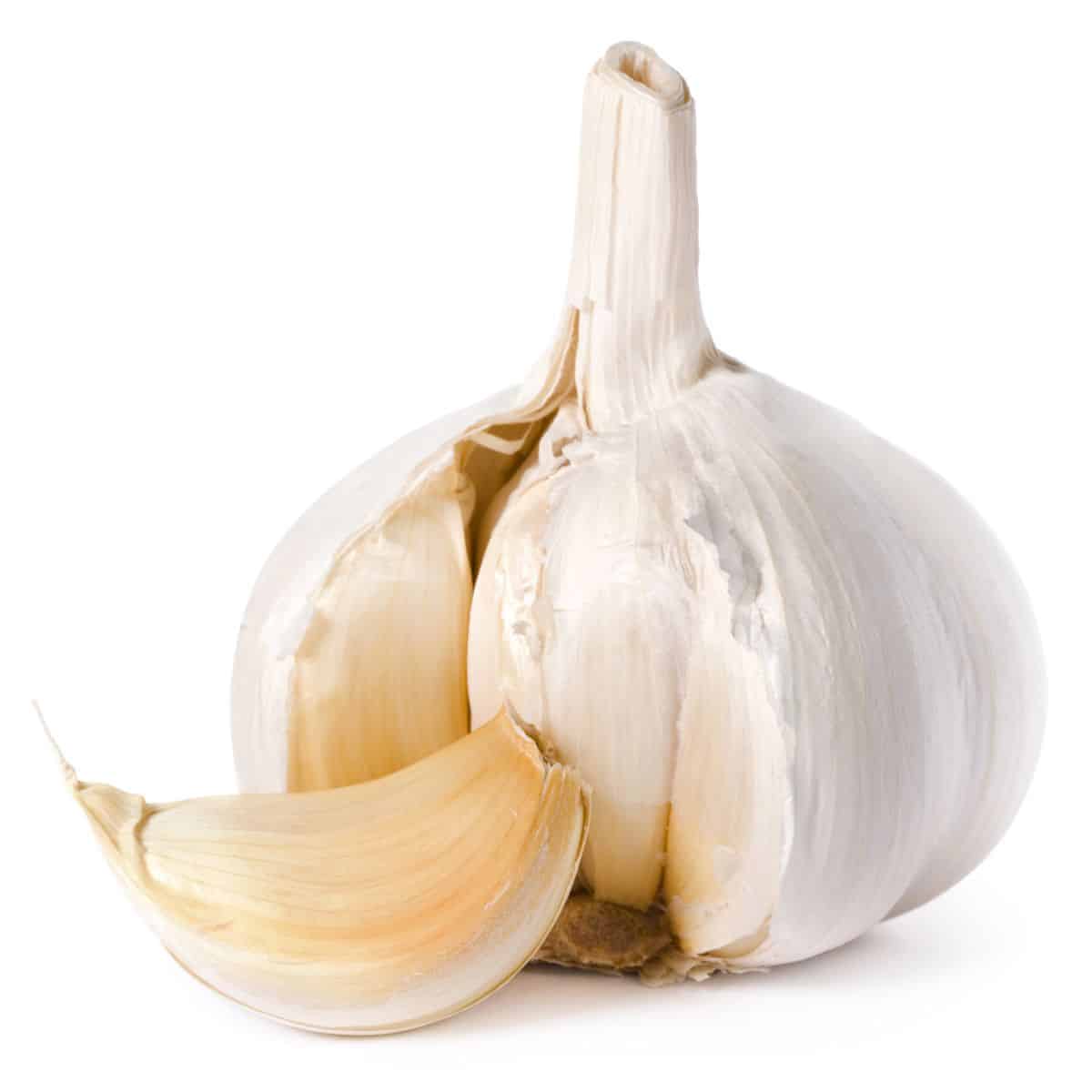
Carpathian garlic, also known as Romanian Red garlic or Polish Hardneck, is a variety that thrives in colder climates. It has a rich and spicy flavor with a medium level of heat. Carpathian garlic has large cloves and a purple-striped outer skin. It can be used in a variety of dishes, including roasted vegetables, sautés, and sauces.
Chesnok Red Garlic
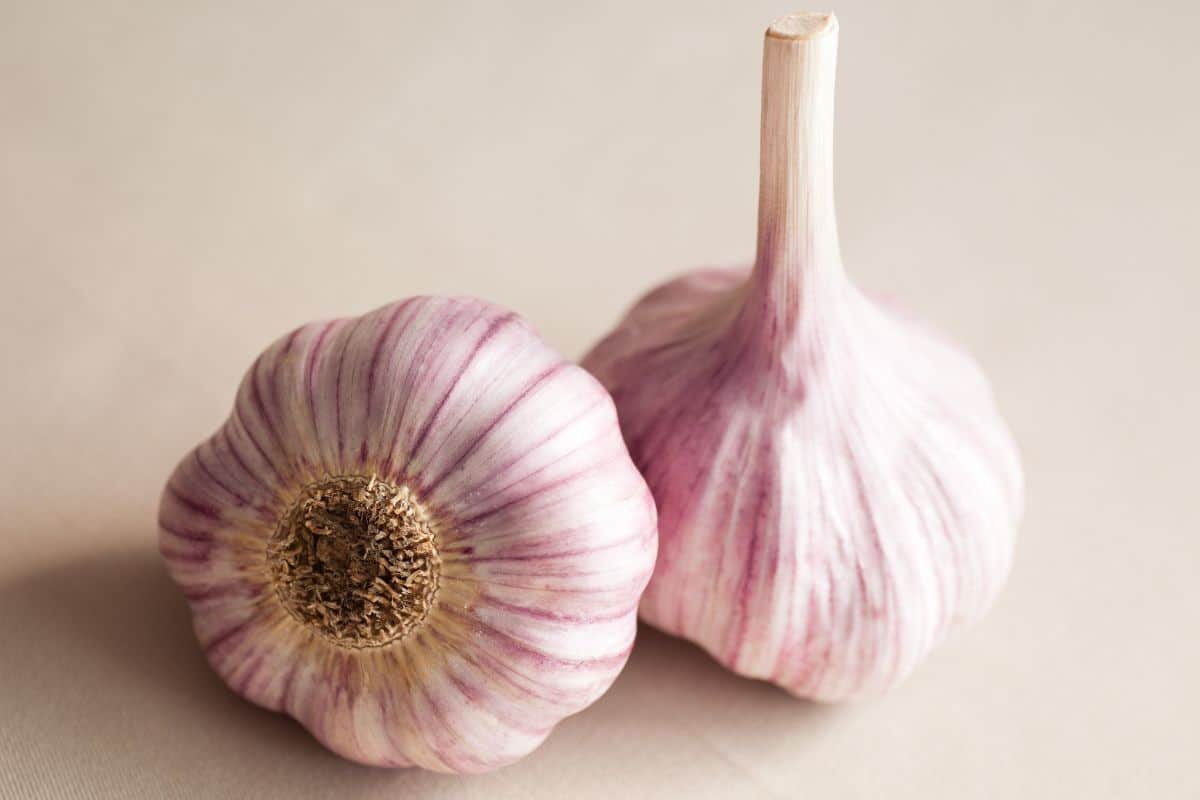
Chesnok Red garlic is known for its excellent flavor when cooked. It has a sweet and mild taste with a hint of heat. The cloves are large and have a brownish-red outer skin. It’s often used in Mediterranean and Eastern European cuisines, where its flavor shines in roasted dishes, sauces, and soups. Feel free to test our Mediterranean claim with these Mediterranean Romesco Bowls
Czech Broadleaf Garlic
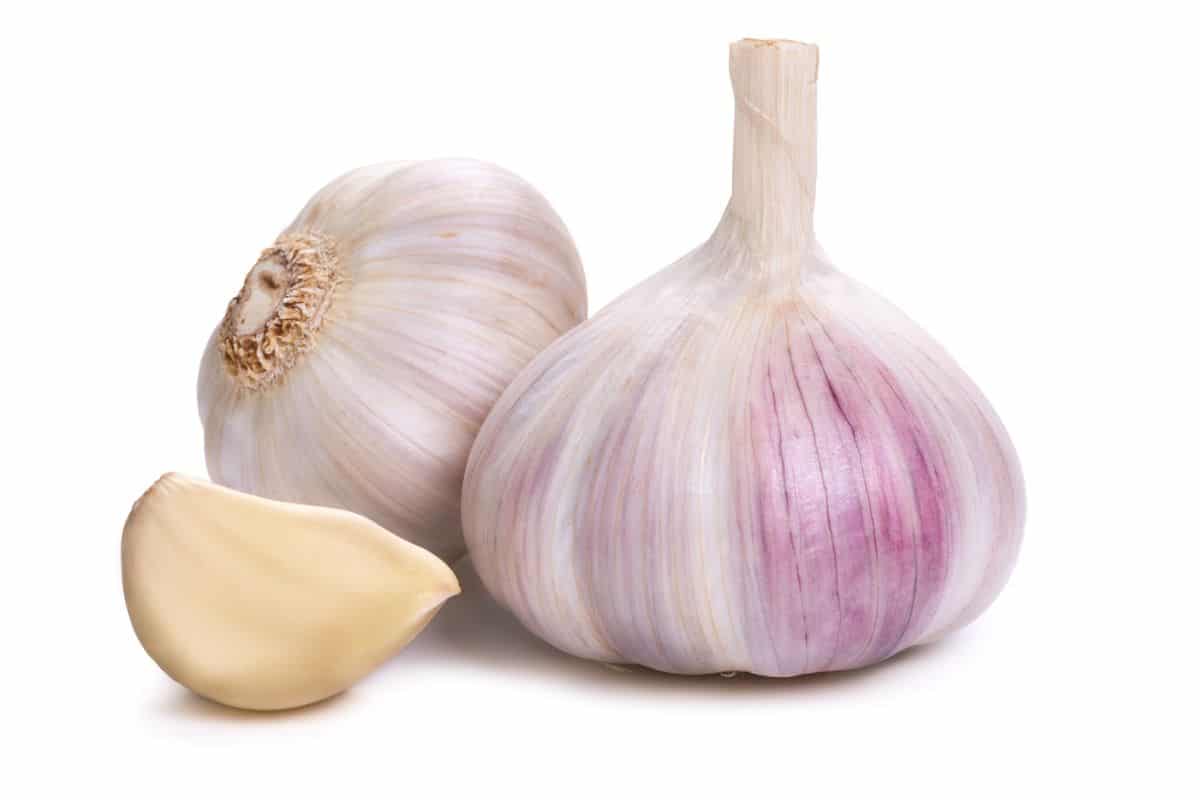
Czech Broadleaf garlic is a hardneck variety with a rich, full-bodied flavor. It has large, flat leaves and cloves that are easy to peel. The outer skin is creamy white with purple streaks. It works well in a wide range of recipes, including roasted meats, sautés, and garlic bread.
Georgian Crystal Garlic
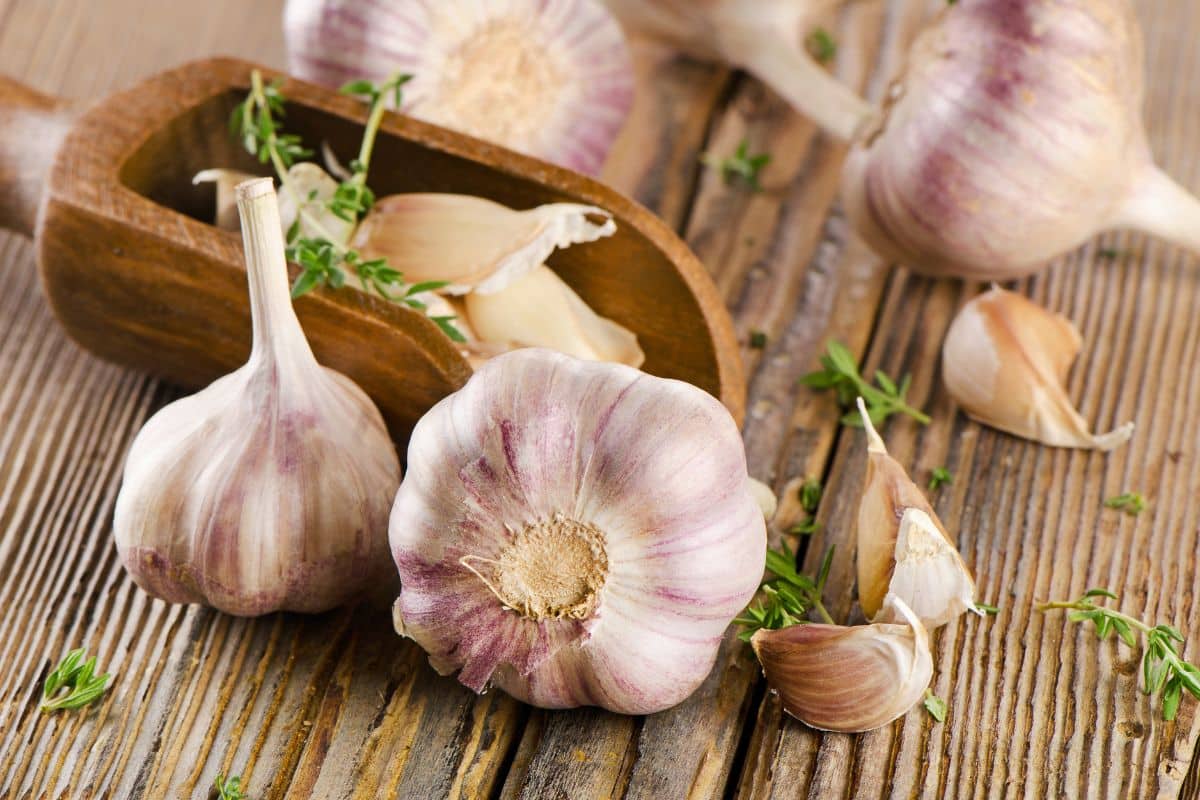
Georgian Crystal garlic is known for its large bulb size and mild flavor. It has a white skin with occasional pinkish-purple streaks. It offers a nice balance of heat and sweetness. It is versatile and can be used in various culinary applications, including roasting, sautéing, and using it raw in salads and dressings.
German Extra Hardy Garlic
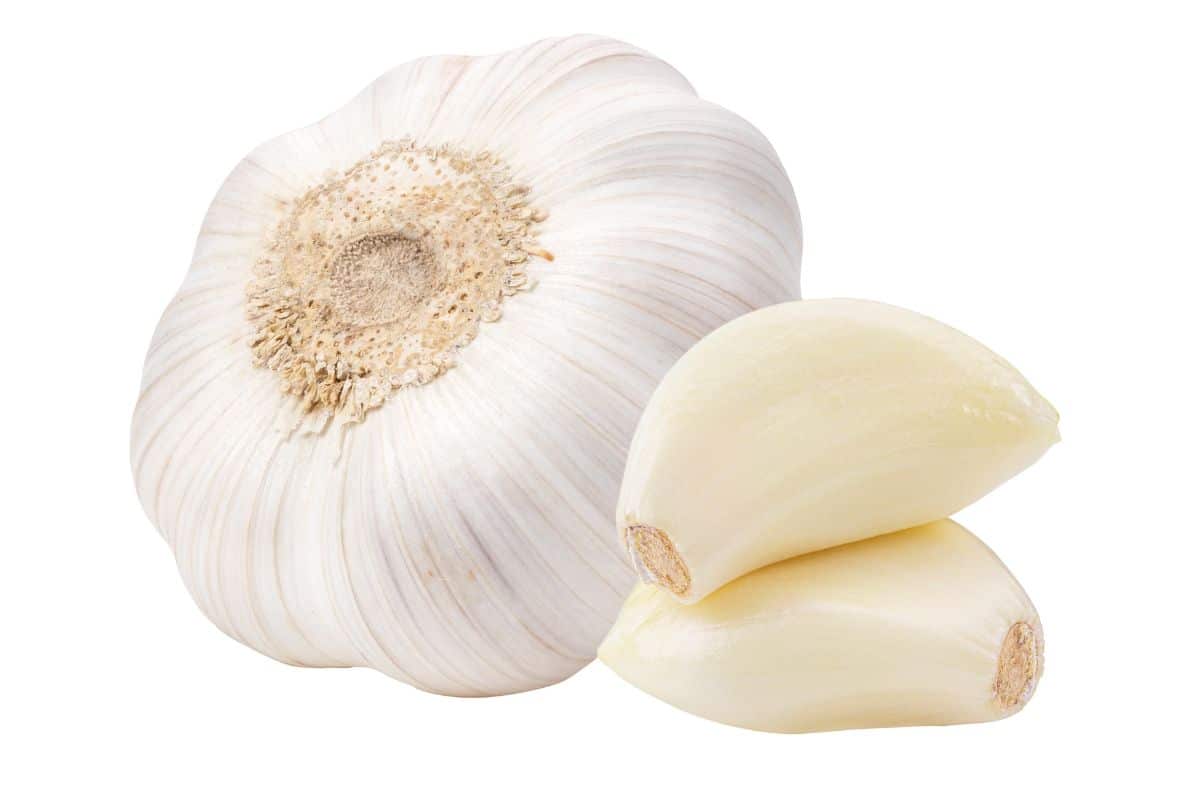
German Extra Hardy garlic is a cold-hardy variety that produces large bulbs with several easy-to-peel cloves. It has a strong, robust flavor that intensifies when cooked. It is excellent for adding flavor to soups, stews, and roasted meats. It also works well in sauces and marinades.
Kettle River Giant Garlic
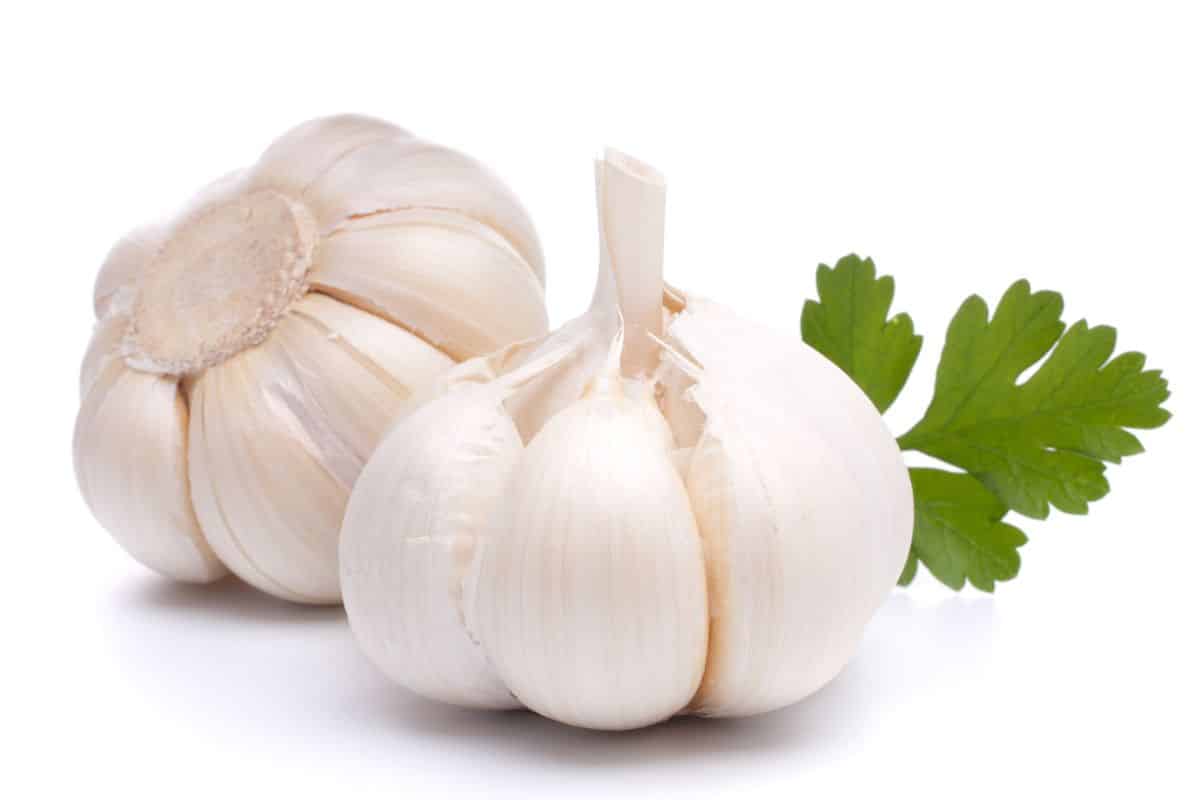
Kettle River Giant garlic is a large-bulbed variety that typically has 4 to 5 cloves per bulb. It has a robust, hot flavor that mellows when cooked. It is suitable for roasting, grilling, and adding to meat and vegetable dishes to impart a bold garlic taste. It also works well when used in pickling and preserving.
Korean Red Garlic
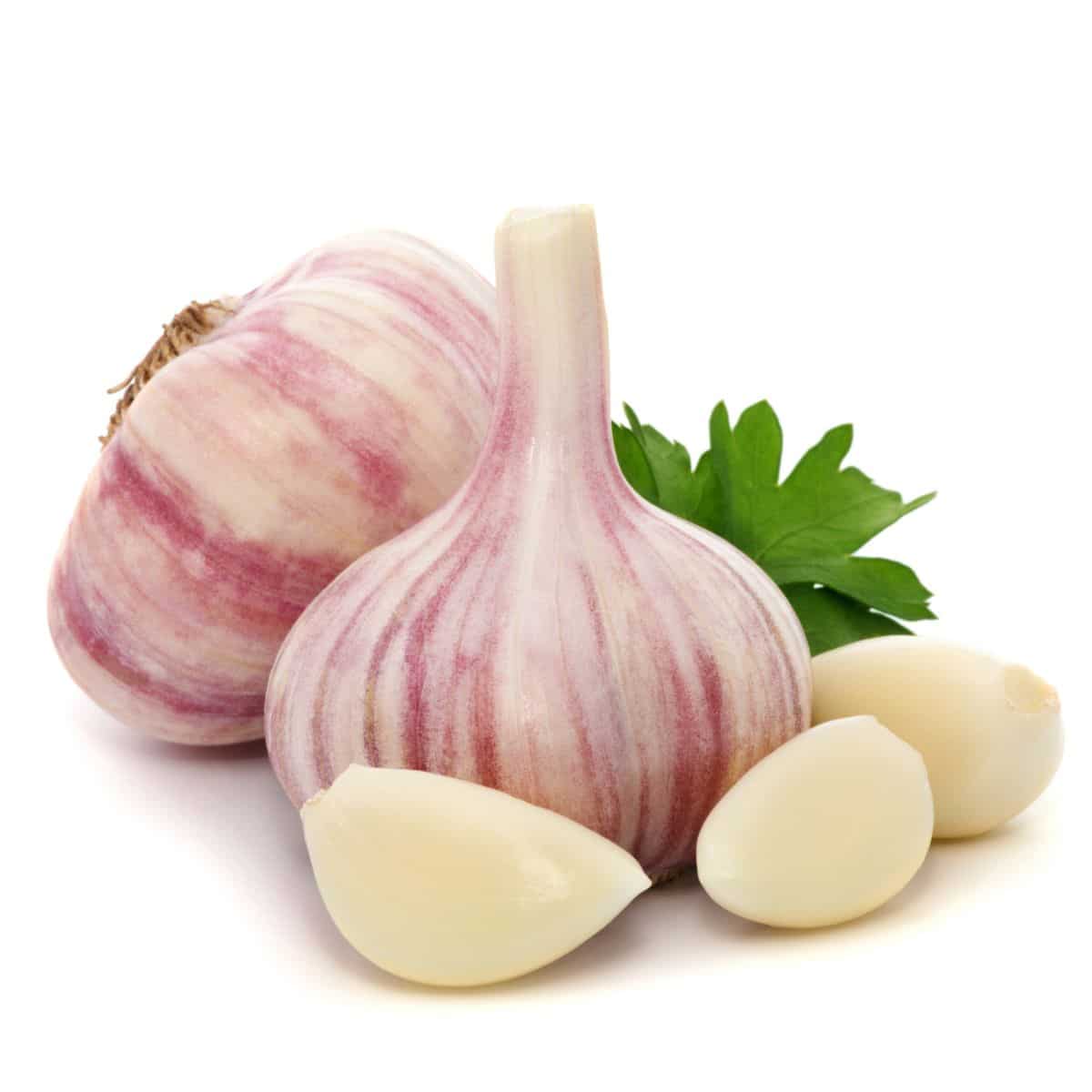
Korean Red garlic, also known as Korean Rocambole garlic, has a fiery and spicy flavor that is appreciated by garlic enthusiasts. It has a brownish-red skin and usually contains 8 to 12 cloves per bulb. It adds a punch of flavor to stir-fries, spicy sauces, and kimchi recipes. When roasted, it develops a slightly sweeter taste. It is ideally suited for this Korean Kimchi Soup Recipe. Or your own Homemade Kimchi Recipe.
Leningrad Garlic
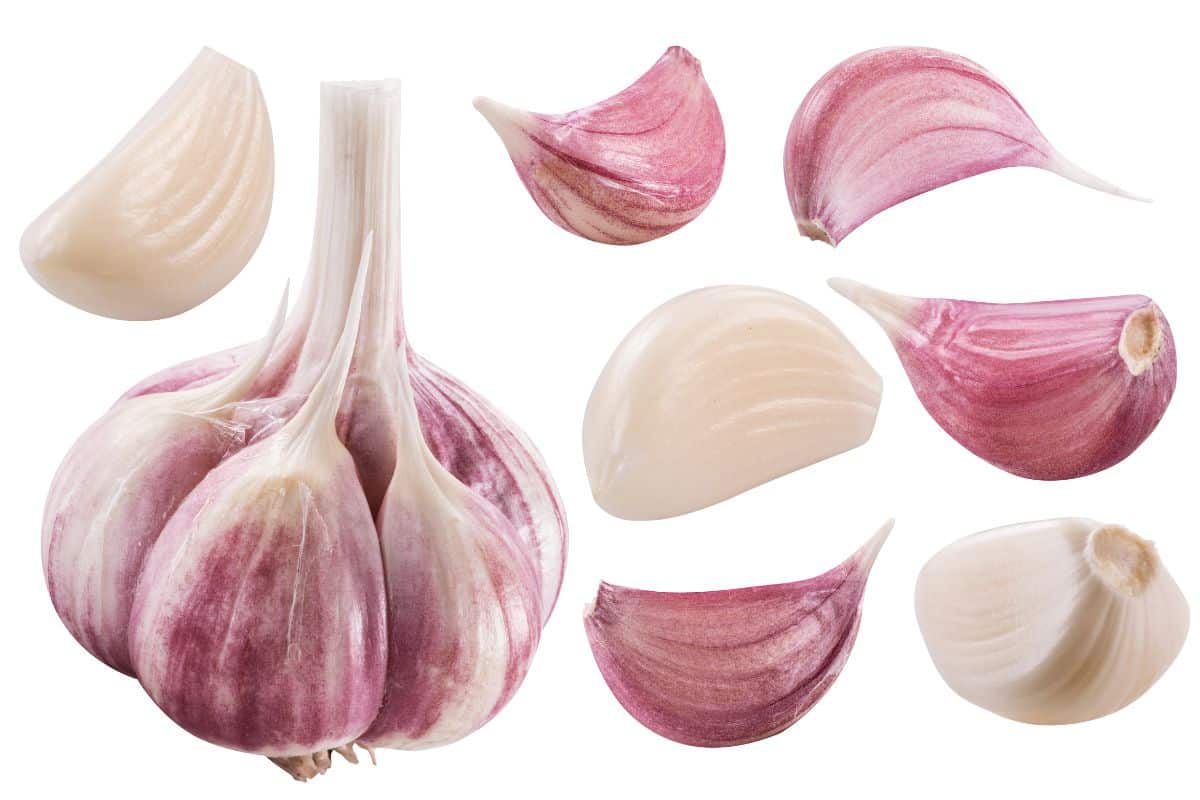
Leningrad garlic is a bold and pungent hardneck variety with a rich garlic flavor. It has a white skin with purple stripes and typically contains 4 to 6 cloves per bulb. It is excellent for roasting, grilling, and using in sauces or dressings to enhance the overall taste. Its robust flavor stands up well when paired with strong ingredients.
Metechi Garlic
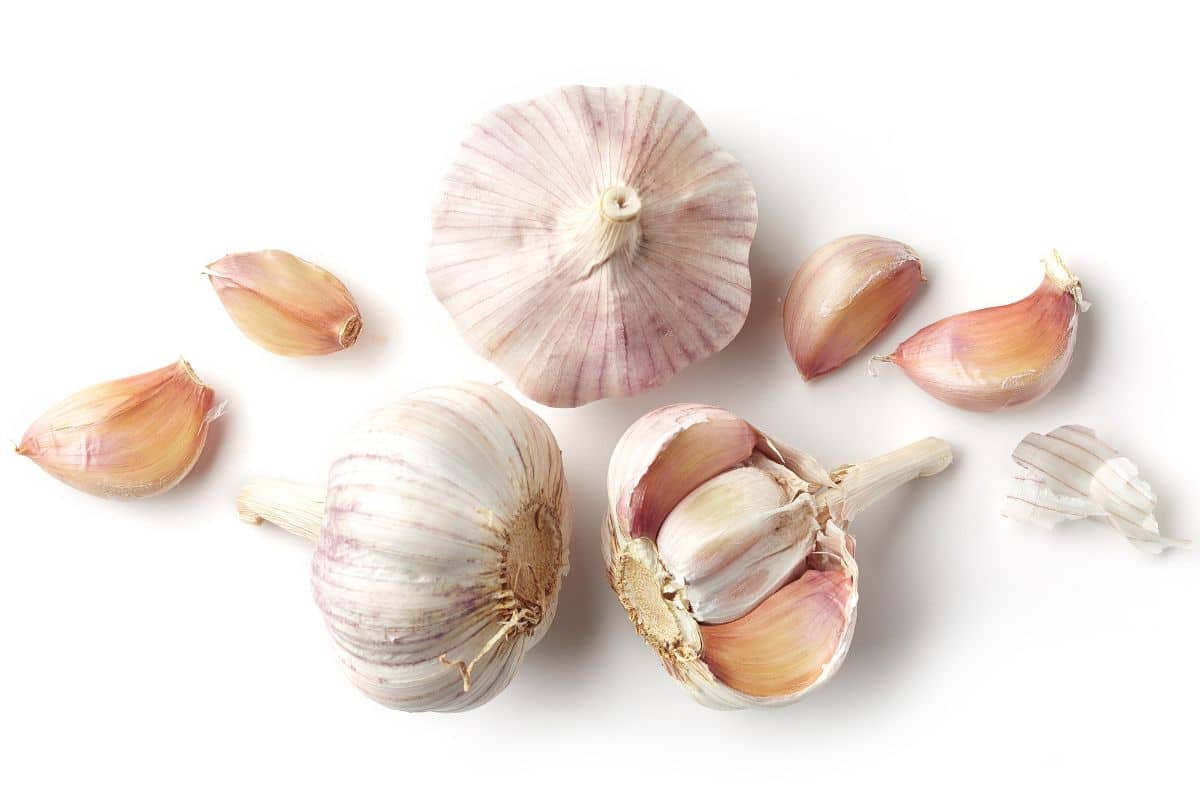
Metechi garlic is a bold and pungent hardneck variety originating from the Republic of Georgia, not the home of the Atlanta Braves Georgia but the rugged mountain nation in the South Caucasus region. It has a purple-striped skin and typically contains 6 to 8 cloves per bulb. It adds a strong garlic flavor to dishes and can be used in roasts, stews, and hearty sauces. It also works well when used in fermentation and pickling. Quick Pickled Vegetables Guide.
Montana Giant Garlic
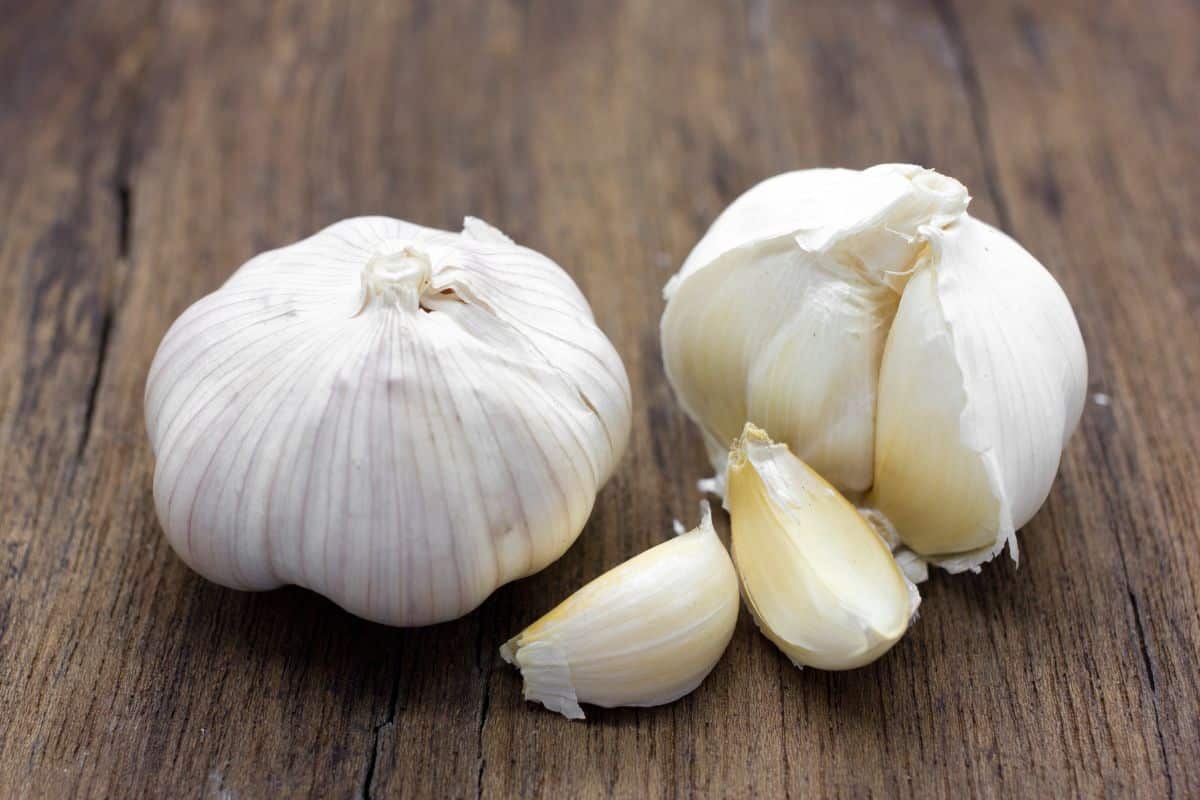
Montana Giant garlic is known for its large bulb size and mild flavor. It typically produces 4-6 big cloves per bulb. Montana Giant garlic is versatile and can be used in various culinary applications. Its flavor profile is generally described as slightly sweet and not overly pungent. It works well in roasted dishes, stir-fries, sauces, and soups.
Music Garlic
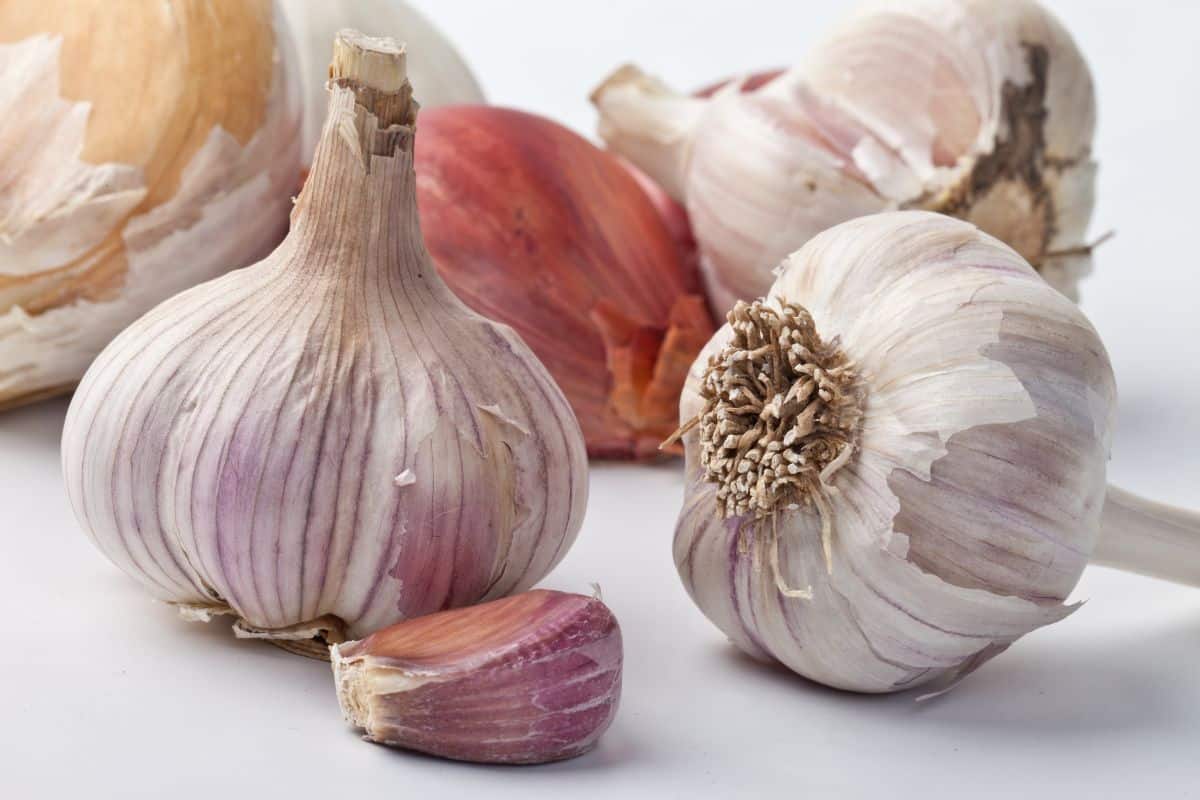
Music garlic is a popular hardneck variety originating from Italy. It has a robust and bold flavor with a hint of spiciness. Music garlic bulbs are large and typically consist of 4-6 large cloves. Due to its strong flavor, it works exceptionally well in dishes where you want the garlic to stand out, such as homemade pesto, marinades, and roasted vegetables. Try it in your own Easy Homemade Pesto.
Persian Star Garlic
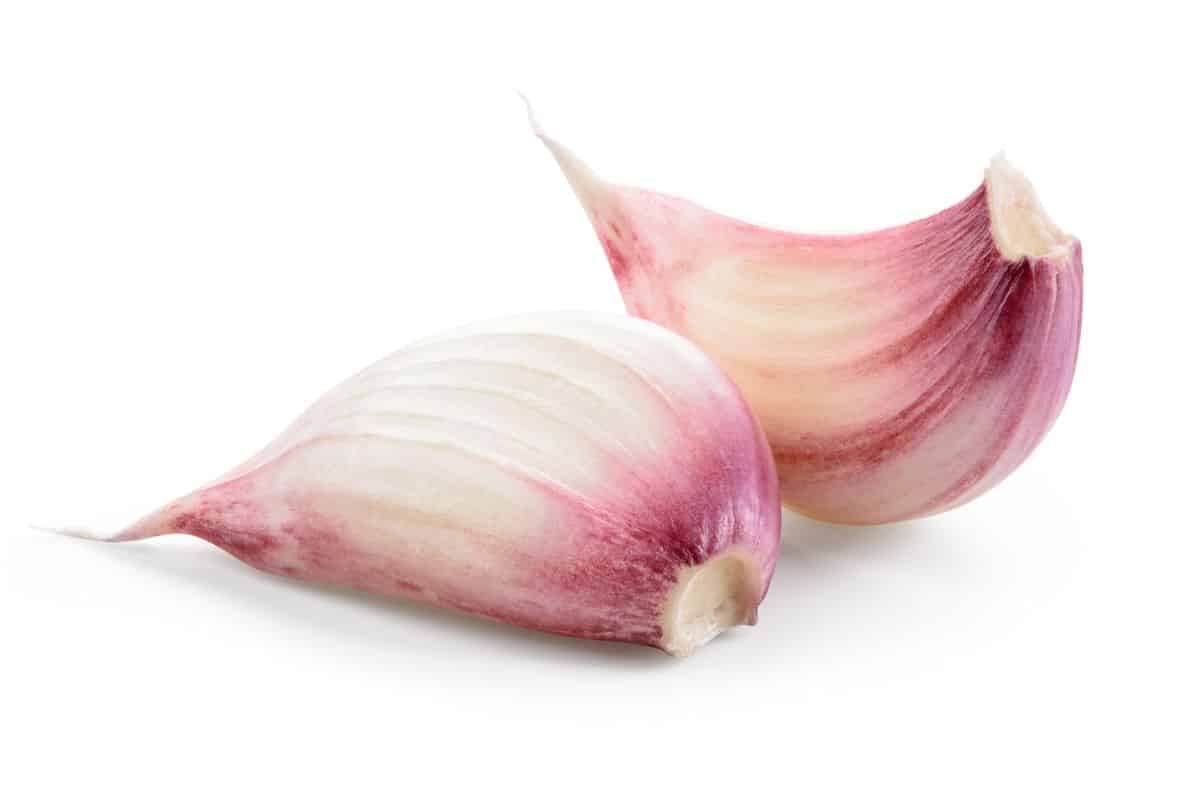
Persian Star garlic is known for its attractive purple-striped bulbs. It has a rich, full-bodied flavor that is medium in intensity. Persian Star garlic produces 6-8 cloves per bulb, making it great for recipes that call for a moderate amount of garlic. It works well in Mediterranean and Middle Eastern dishes, stir-fries, and pasta sauces.
Purple Glazer Garlic
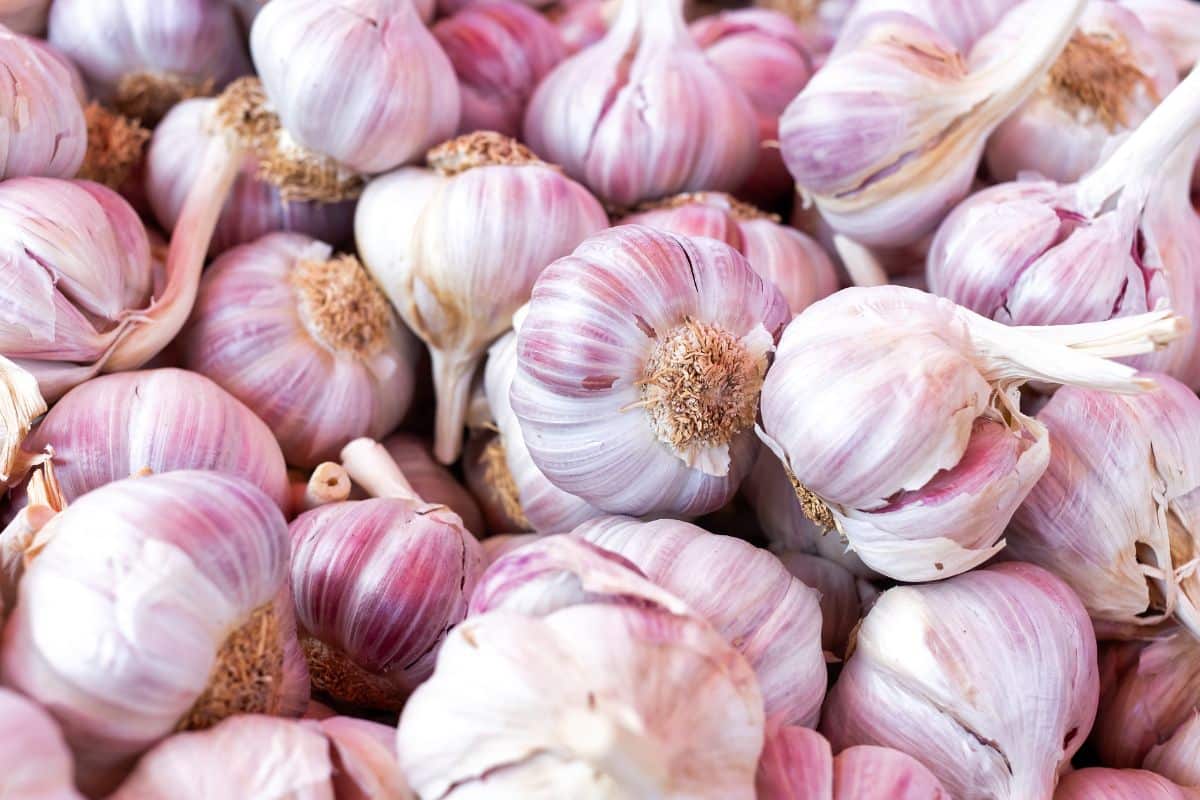
Purple Glazer garlic is a visually striking hardneck variety with purple-streaked bulbs and cloves. It has a mild and sweet flavor, making it a good option for those who prefer milder garlic varieties. Purple Glazer garlic typically has 8-12 cloves per bulb. It can be used in a wide range of recipes, including salads, sautés, roasted meats, and vinaigrettes.
Rosewood Garlic
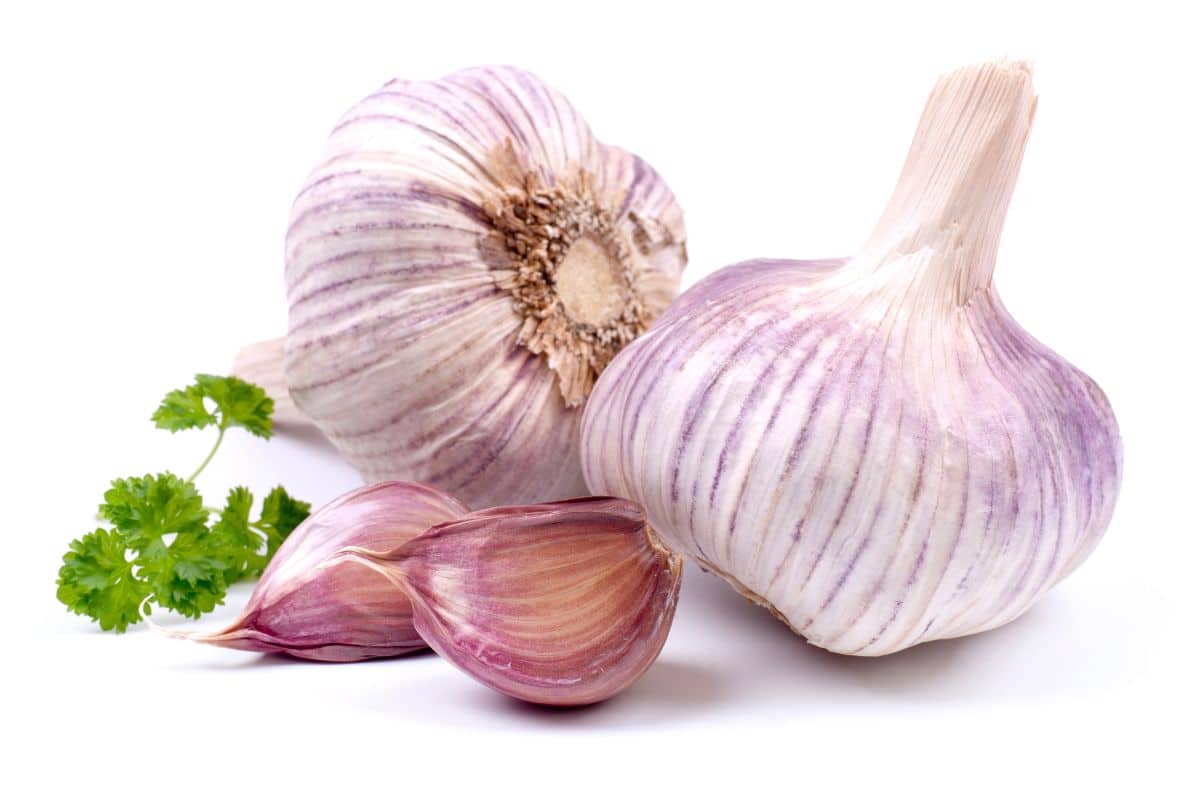
Rosewood garlic is a variety known for its unique appearance and flavor. It has striking purple stripes on its bulbs, and typically contains 6-8 cloves. The flavor of Rosewood garlic is described as complex with a combination of spicy, earthy, and slightly sweet notes. It is versatile in the kitchen and can be used in almost any dish that calls for garlic.
Shandong Purple Garlic
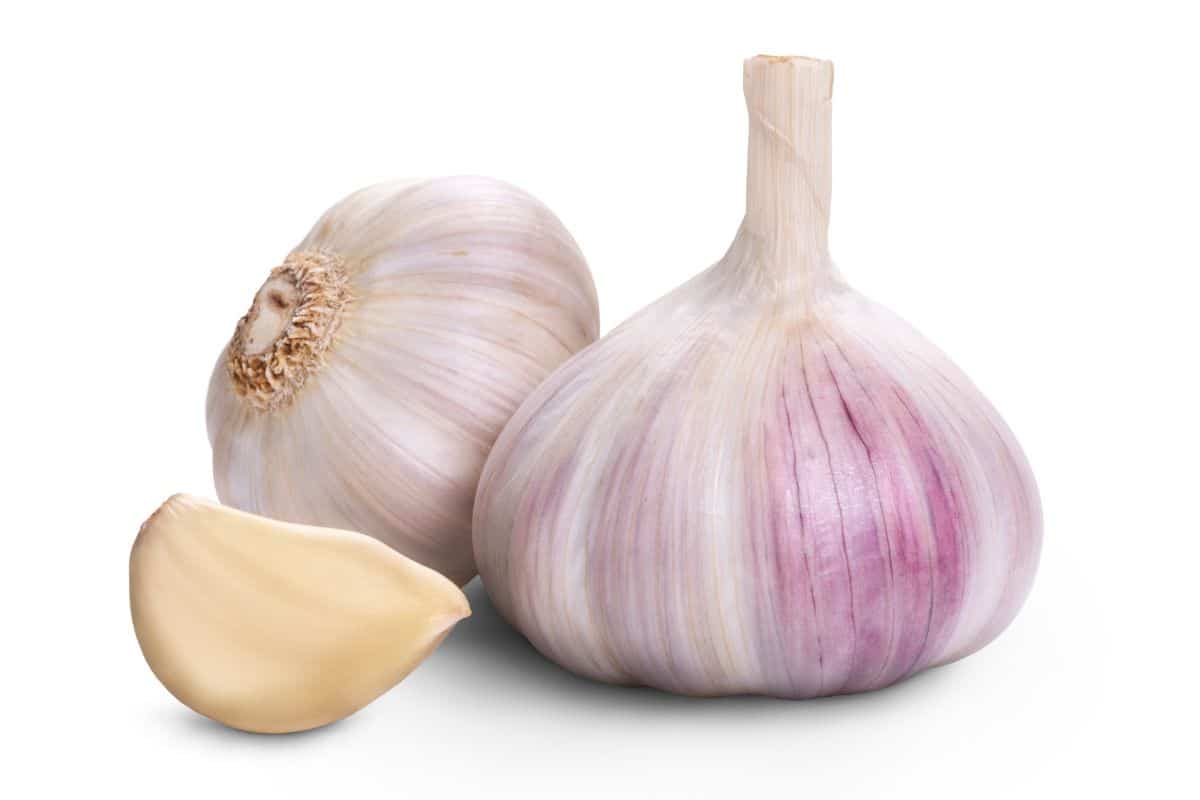
Shandong Purple garlic is a hardneck variety originating from China. It has a strong and pungent flavor that intensifies when cooked. Shandong Purple garlic bulbs are medium to large in size and consist of 6-10 cloves. Due to its potent flavor, it works well in recipes where you want a bold garlic taste, such as stir-fries, marinades, and hearty vegetable dishes.
Siberian Garlic
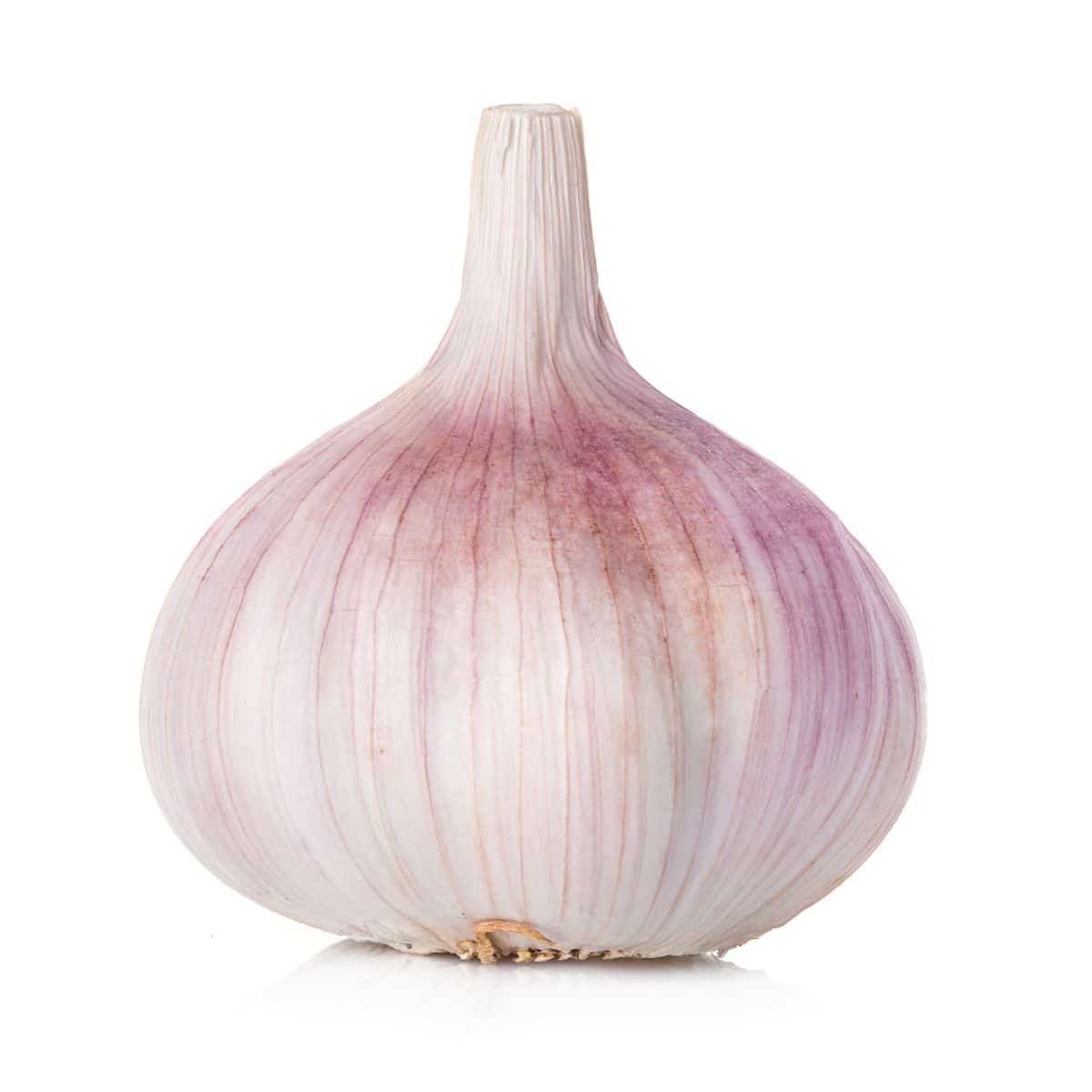
Siberian garlic is a cold-hardy variety that can withstand harsh climates. It has a milder flavor compared to some other hardneck garlic varieties, making it suitable for those who prefer a less intense garlic taste. Siberian garlic bulbs are typically medium-sized and contain 6-8 cloves. It can be used in various dishes, including soups, stews, and roasted meats. Siberian garlic shows how world-wide garlic is grown as this is a region known for bone chilling winters and extremely hot summers.
Spanish Roja Garlic
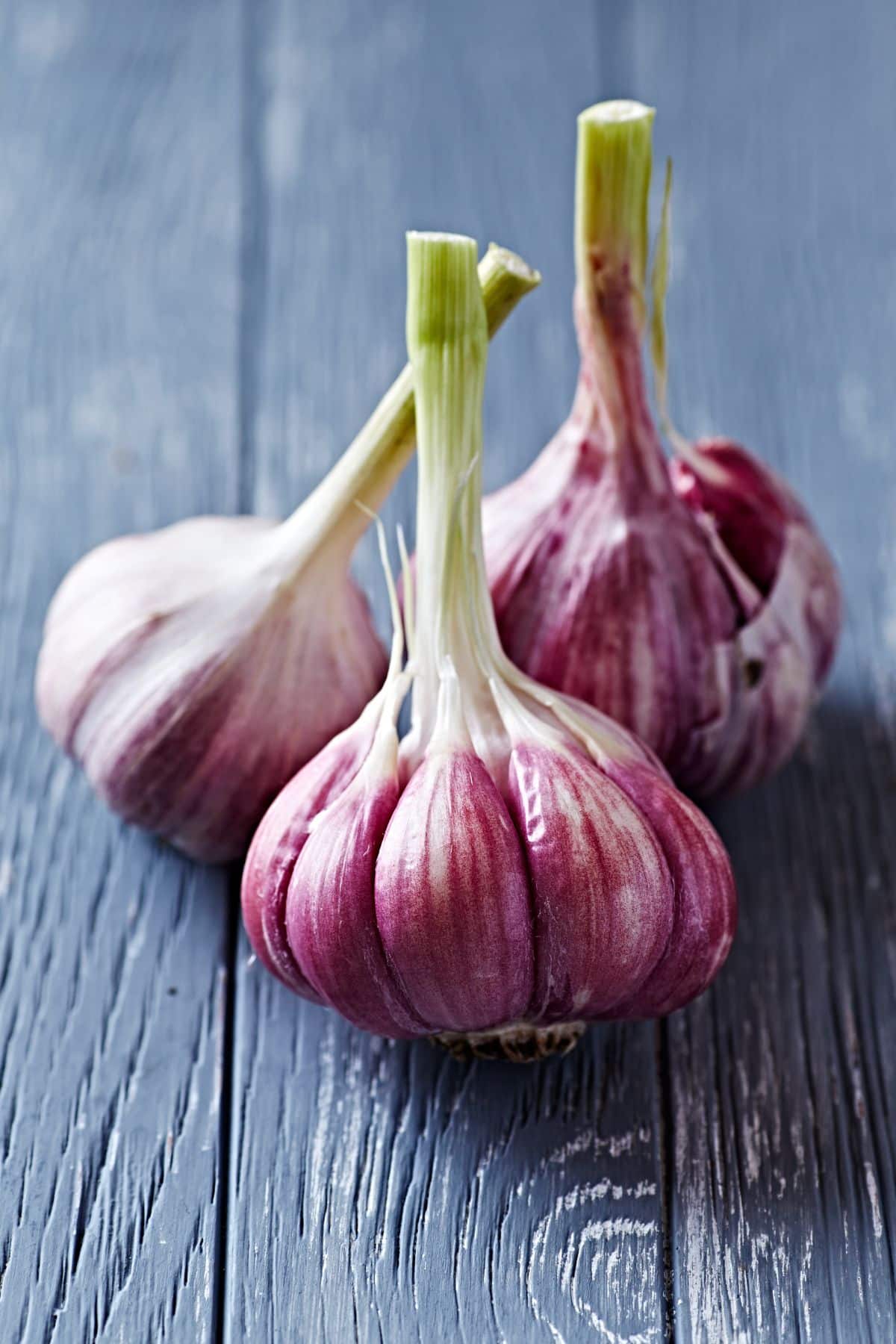
Spanish Roja garlic is a popular garlic variety with a rich complex flavor. It has large cloves with reddish-brown skins and purple streaks. The flavor intensifies when cooked, making it perfect for sautéing, stir-frying, and using in Mediterranean and Spanish cuisines. It’s also delicious when roasted and spread on bread. It would be a good option for our favorite Vegan Garlic Bread Everyone Will LIke.
Tasmanian Purple Garlic
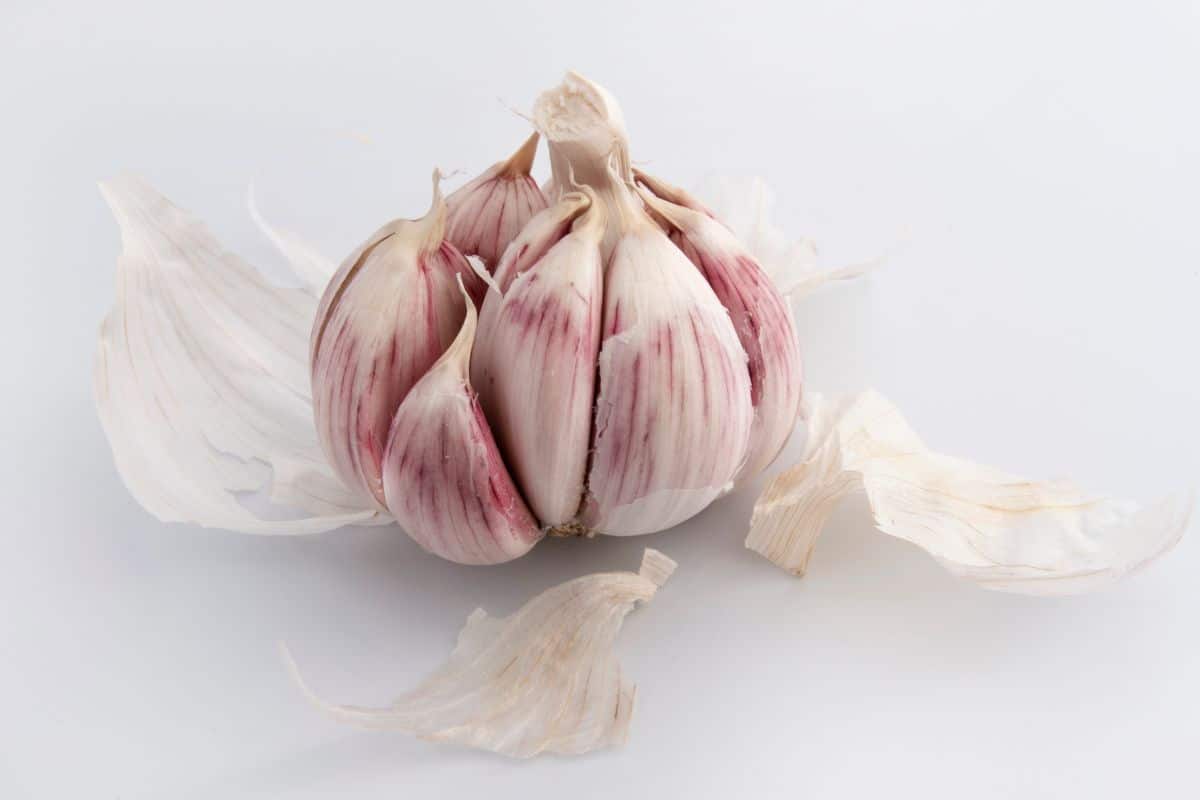
Tasmanian Purple garlic is an Australian hardneck garlic variety known for its striking purple bulbs and mild, slightly sweet flavor. It has medium-sized cloves that are easy to peel. This garlic is versatile and can be used in a variety of dishes, including stir-fries, roasted vegetables, salad dressings, and marinades. It retains its flavor well when cooked, so it’s a great choice for recipes that call for garlic to be cooked for longer periods.
Transylvanian Garlic
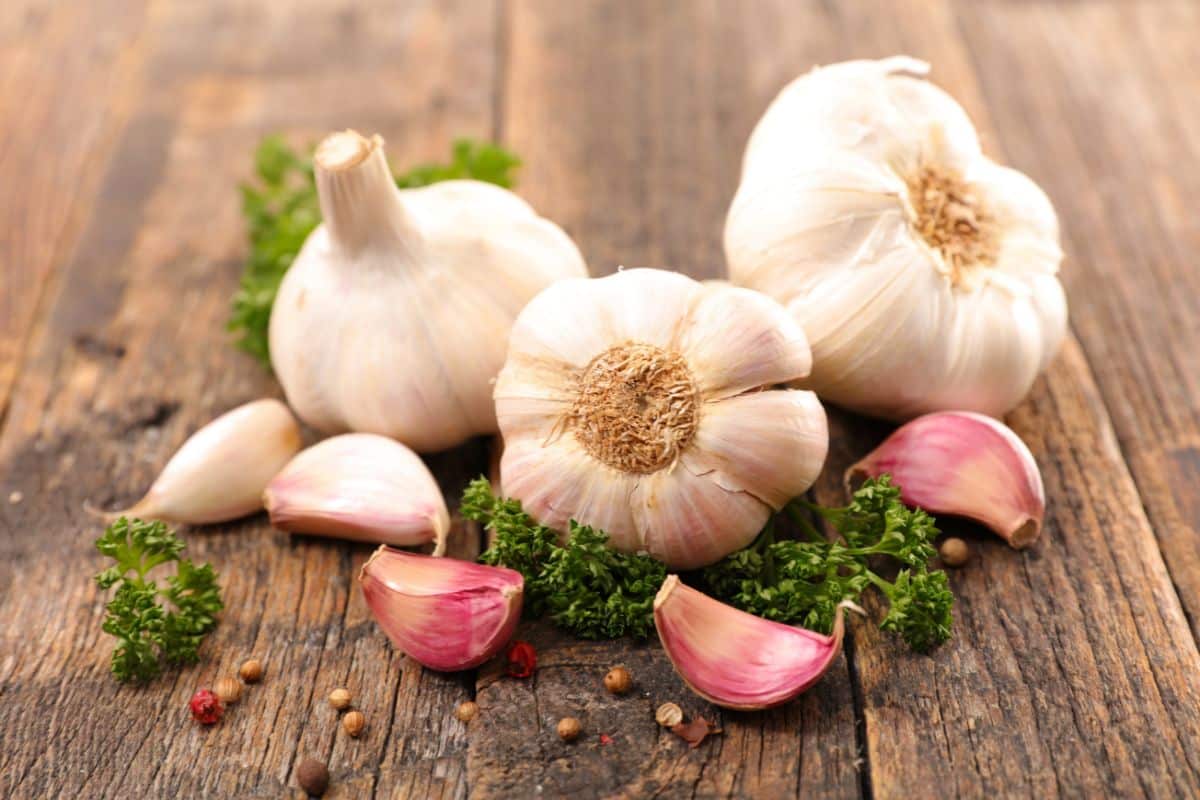
Transylvanian garlic, also known as Romanian Red garlic or Romanian Rocambole garlic, is a hardneck garlic variety with bold, rich flavors. It has medium to large bulbs with reddish-brown skins and often contains 6 to 8 large cloves. Transylvanian garlic is excellent for adding depth to stews, soups, and roasted meats. Its flavor becomes milder when cooked, making it a versatile choice for various recipes.
Turban Garlic
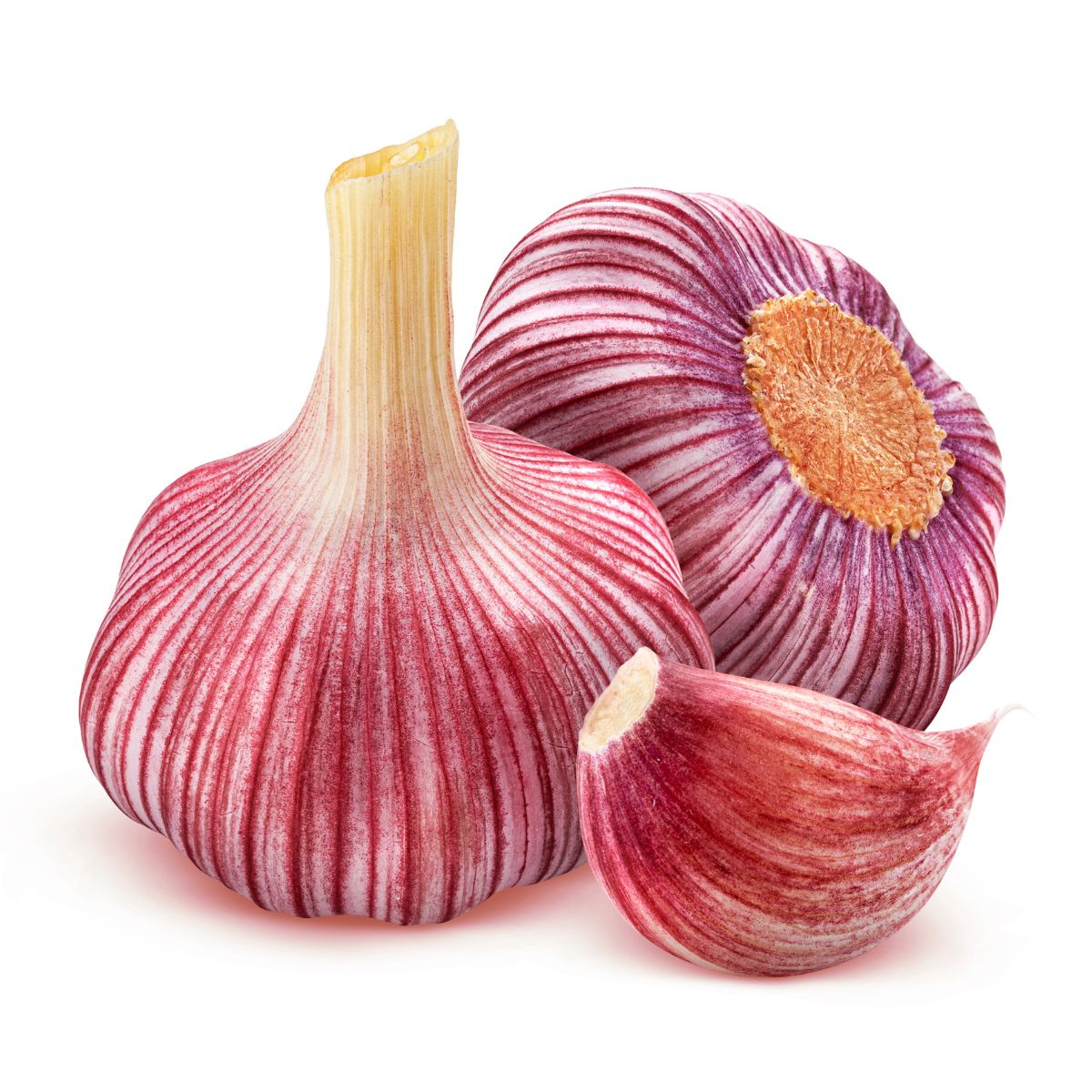
Turban garlic, also called Red Turban garlic or Egyptian garlic (there is evidence of garlic use in Ancient Egypt), is a distinctive variety known for its unusual appearance. It has large bulbs with a prominent topknot or “turban” and often exhibits purple streaks. Turban garlic has a milder flavor compared to some other hardneck varieties, making it suitable for dishes where you want a more subtle garlic taste. It can be used in stir-fries, pasta dishes, and roasted vegetables.
Vietnamese Red Garlic
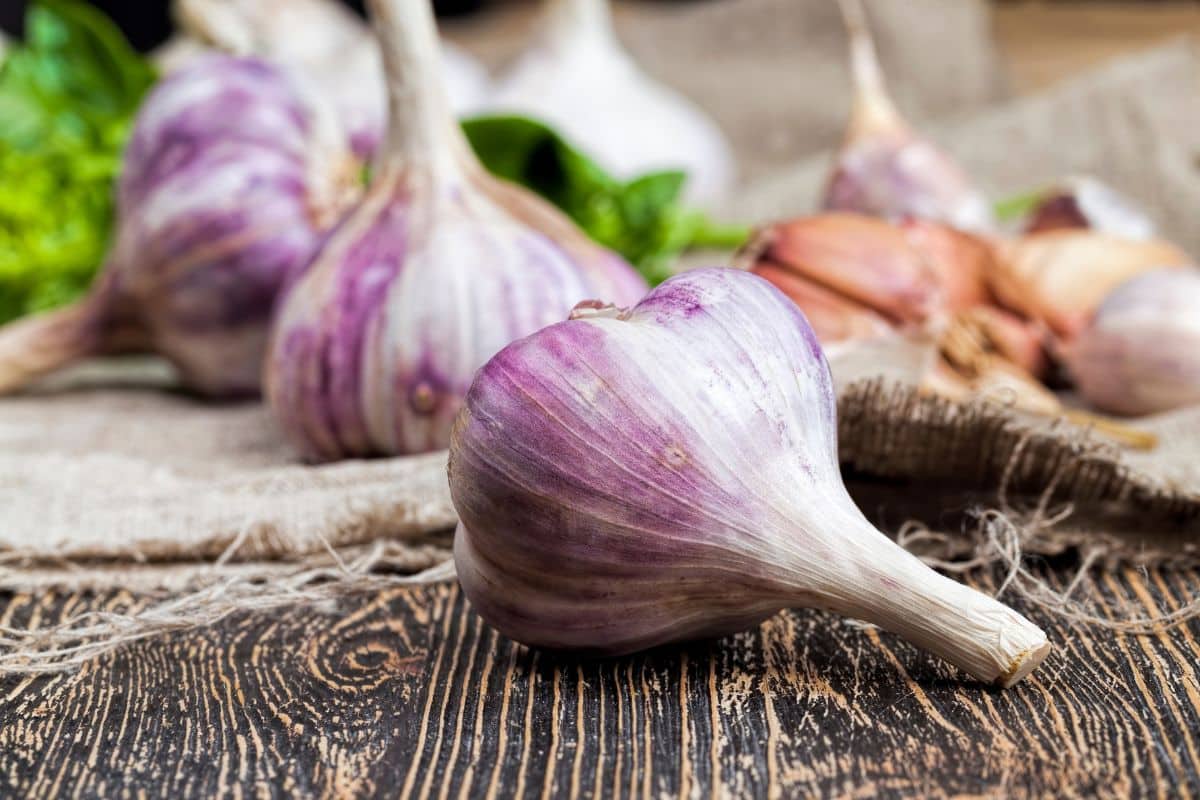
Vietnamese red garlic is a hardneck garlic variety originating from Vietnam. It features medium-sized bulbs with reddish-purple skins and a strong, spicy flavor. This garlic adds a robust taste to various dishes, such as stir-fries, curries, and soups. It’s also delicious when used in marinades or as a seasoning for roasted meats and vegetables.
Garlic Powder vs Minced Garlic
Garlic powder and minced garlic are both popular forms of garlic used in cooking, but they differ in terms of texture, flavor, and culinary applications. Here’s a breakdown of their differences:
Texture: Garlic powder is a fine, dehydrated powder, while minced garlic refers to fresh garlic cloves that have been finely chopped or crushed.
Flavor: Garlic powder has a milder flavor compared to minced garlic. The drying process of garlic powder intensifies its taste and aroma. Minced garlic, on the other hand, retains the natural pungency and sharpness of fresh garlic.
Convenience: Garlic powder is known for its convenience and long shelf life. It can be easily stored and used as a pantry staple. Minced garlic, being fresh, has a shorter shelf life and may require refrigeration.
Culinary uses: Garlic powder is commonly used as a seasoning in various dishes, sauces, marinades, rubs, and spice blends. It is particularly useful when you want to incorporate garlic flavor without the texture of minced garlic. Minced garlic, with its more prominent flavor and texture, is often used in recipes where the actual presence of garlic is desired, such as sautés, stir-fries, soups, stews, and dressings.
Conversion: When substituting garlic powder for minced garlic or vice versa, the general rule of thumb is that 1/4 teaspoon of garlic powder is equivalent to one fresh garlic clove. However, this may vary depending on personal preference and the specific recipe.
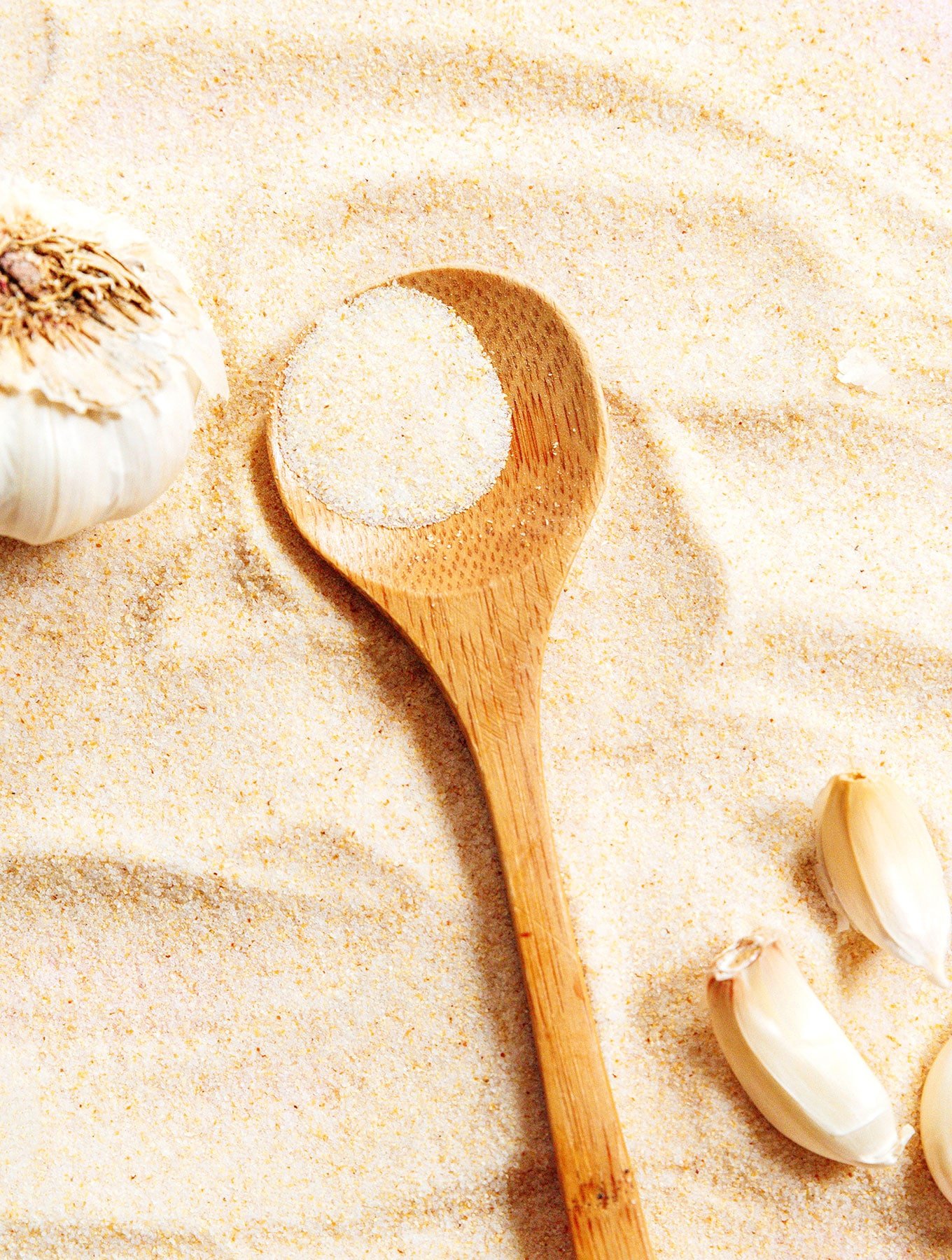
Garlic Powder vs Garlic Salt
Garlic salt typically contains a mixture of garlic powder and table salt, with the ratio varying depending on the brand or recipe. The salt content in garlic salt makes it less concentrated in garlic flavor compared to garlic powder .For this reason garlic salt imparts a milder garlic taste. Garlic salt is often used as a convenient seasoning for enhancing the overall flavor of dishes while also providing some saltiness.
Garlic powder does not contain any salt, making it a suitable option for individuals who need to limit their sodium intake or prefer to control the salt content of their dishes. Garlic salt contributes sodium to your cooking, which may not be suitable for those on low-sodium diets or for recipes that require precise salt control. The Center for Disease Control (CDC) states that 90% of Americans consume more than the recommended limit of 2,350mg of sodium per day.
Culinary Uses: Garlic powder is highly versatile and can be used in various dishes, including soups, stews, marinades, rubs, dressings, and sauces. It can be added directly to recipes, mixed with other seasonings, or used as a dry rub. Garlic salt is commonly used as a general seasoning for meats, poultry, vegetables, popcorn, and snacks. Its combination of garlic and salt flavors makes it a convenient option for seasoning and enhancing the taste of different foods.
Want to make your own Homemade Garlic Salt? It is simple. Just follow this easy guide on How to Make Garlic Salt.
TRIVIA ANSWER! So how did garlic come to be considered a vampire repellent? Well, there are a lot of theories, so we took the one from The Medical Journal of Australia. In the middle-ages garlic was known to repel some insects to include mosquitos, and folklore had it that vampires were created by a disease of the blood. Garlic was the obvious repellent for vampires who, like mosquitoes, drink blood. If only mosquitoes were just folklore.
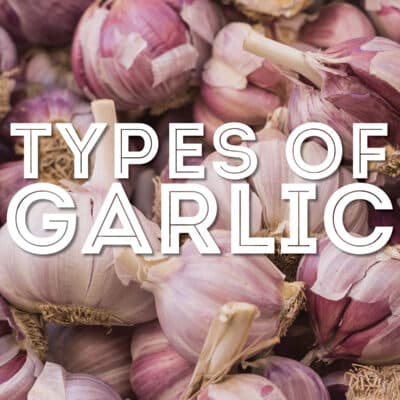
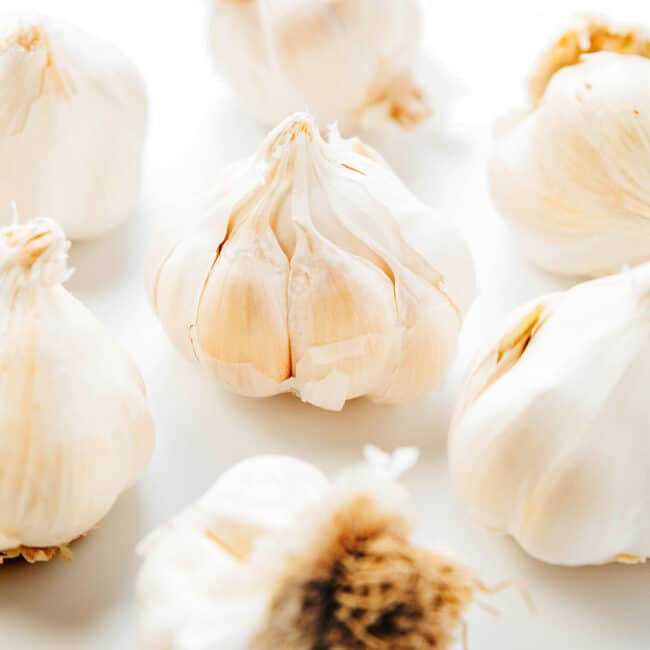
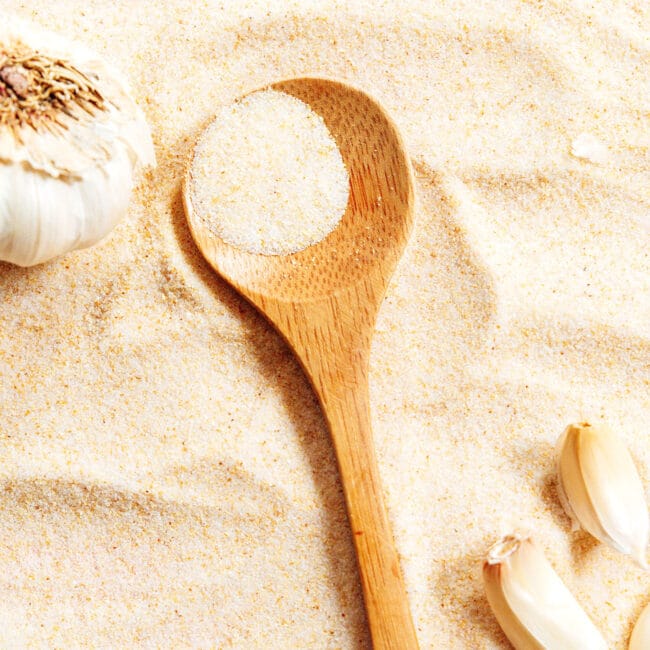
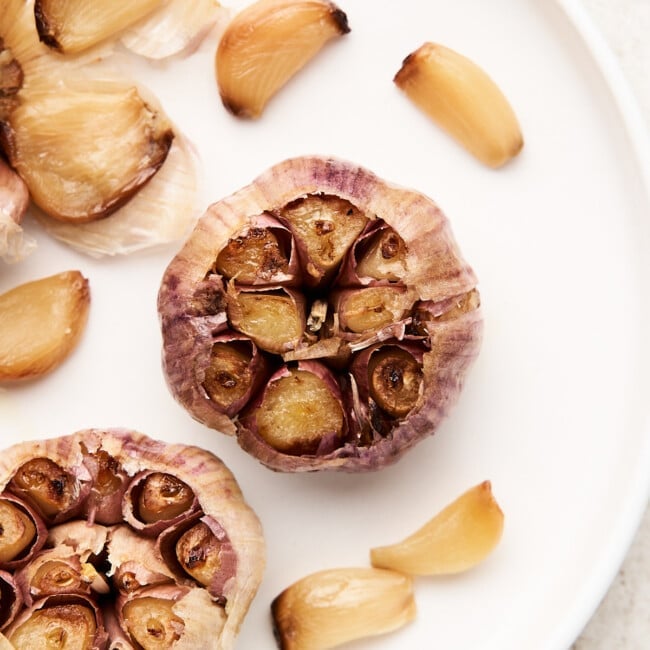
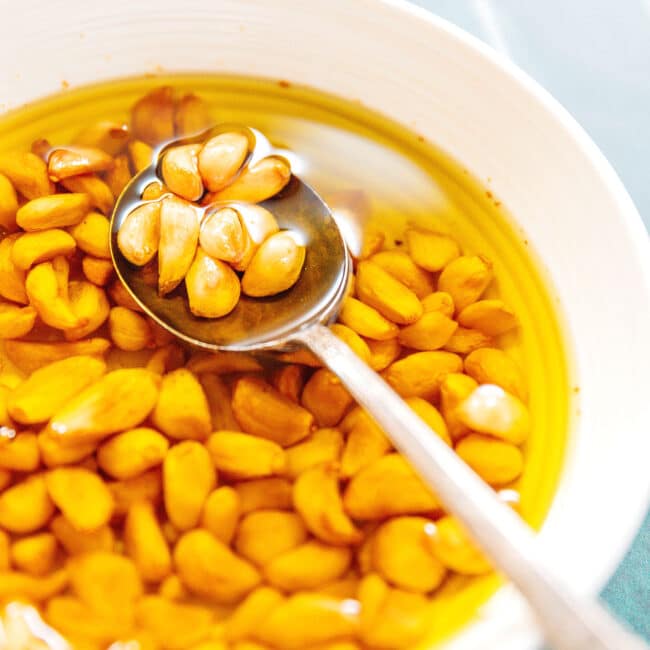
Evelyn Raiter says
Appreciate all the good info about garlic. Have grown 150 or more for years, several varieties, both hard and soft neck. Use the hard neck with the large cloves first, as they don’t keep as long. My love for garlic comes from my Czech background. Was looking for which was the healthiest? From your info, seems Bulgarian is healthiest?? Do you have more info on that? Thank you
Sarah Bond says
I do believe Bulgarian may be one of the healthiest, but not sure of more beyond that!